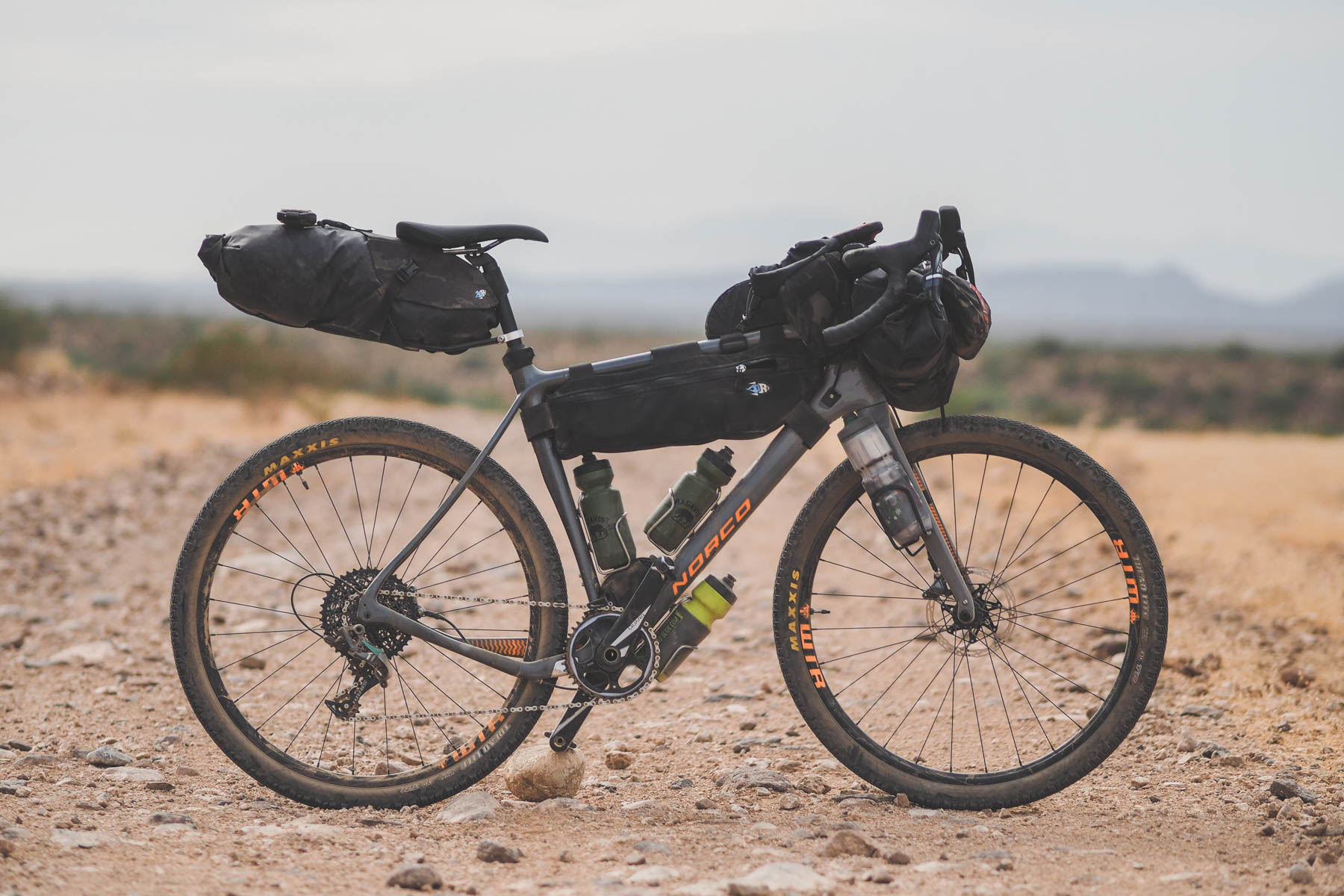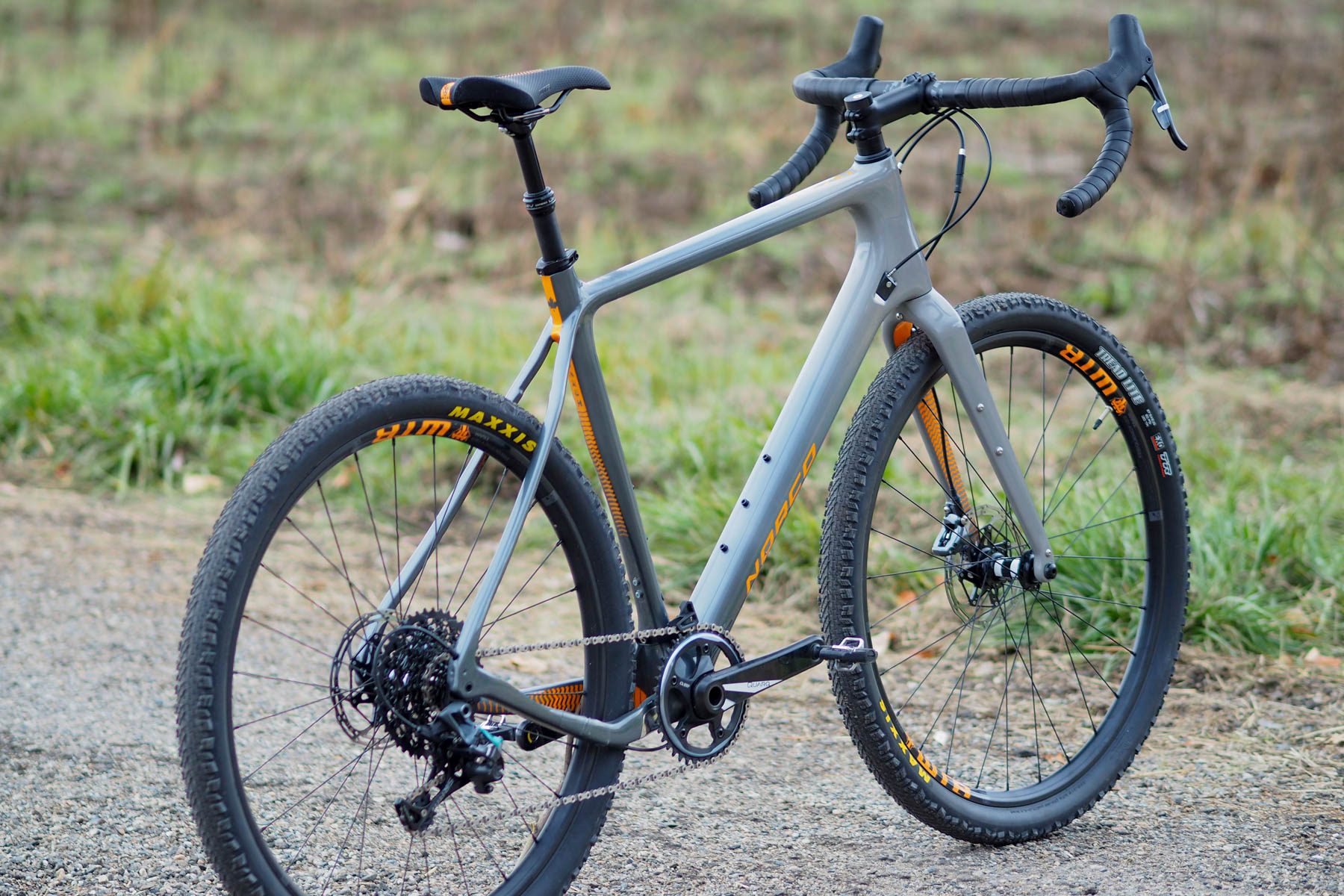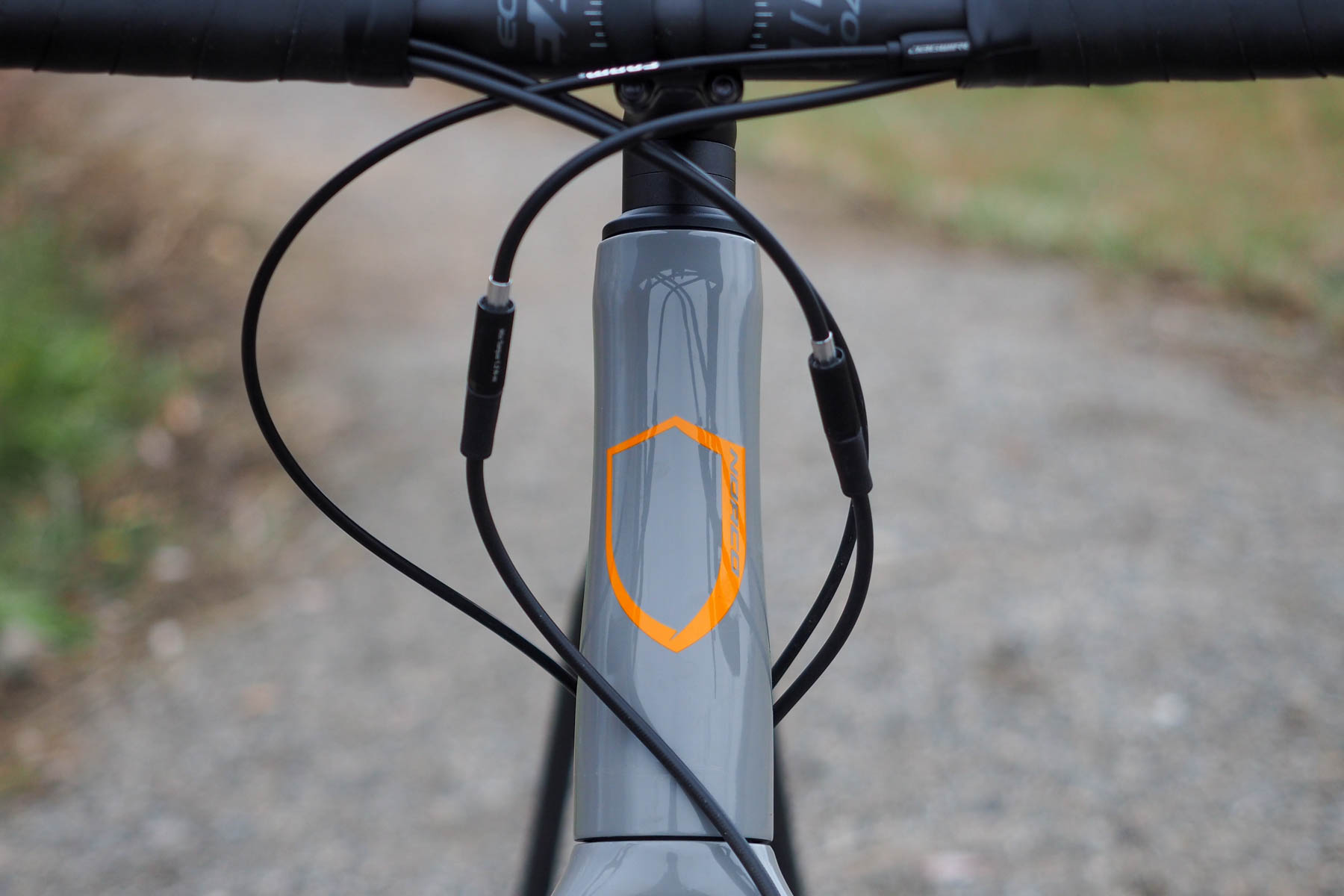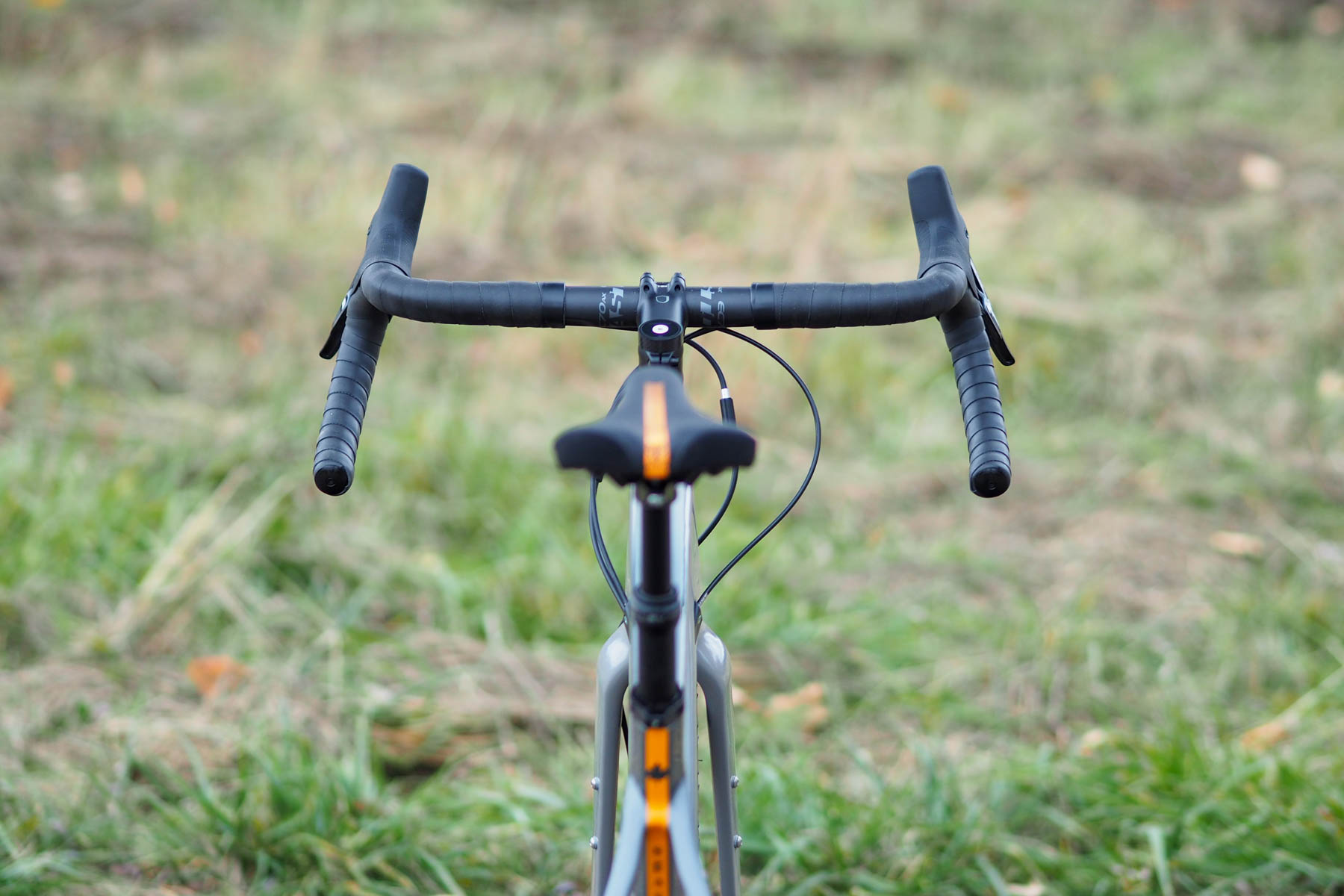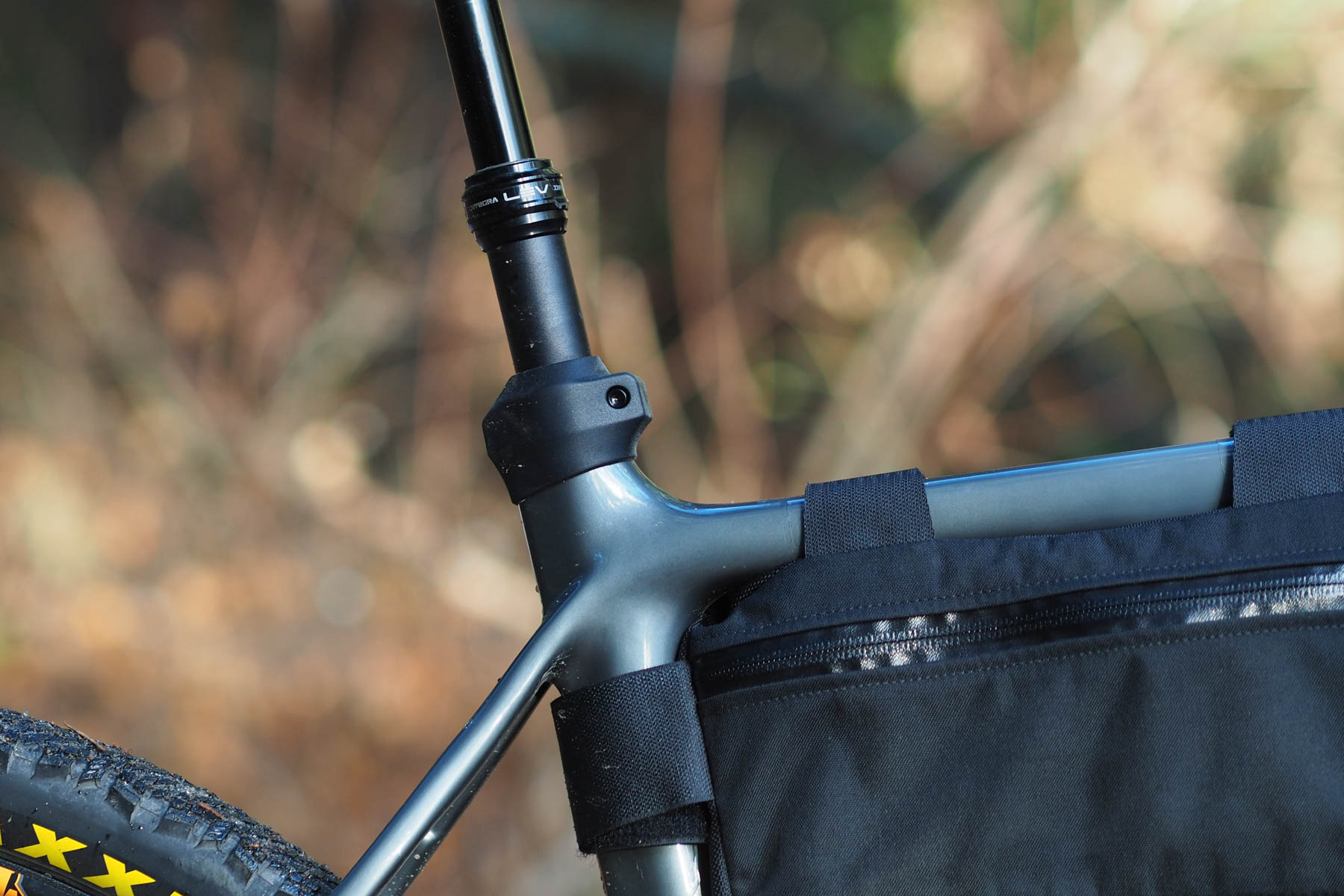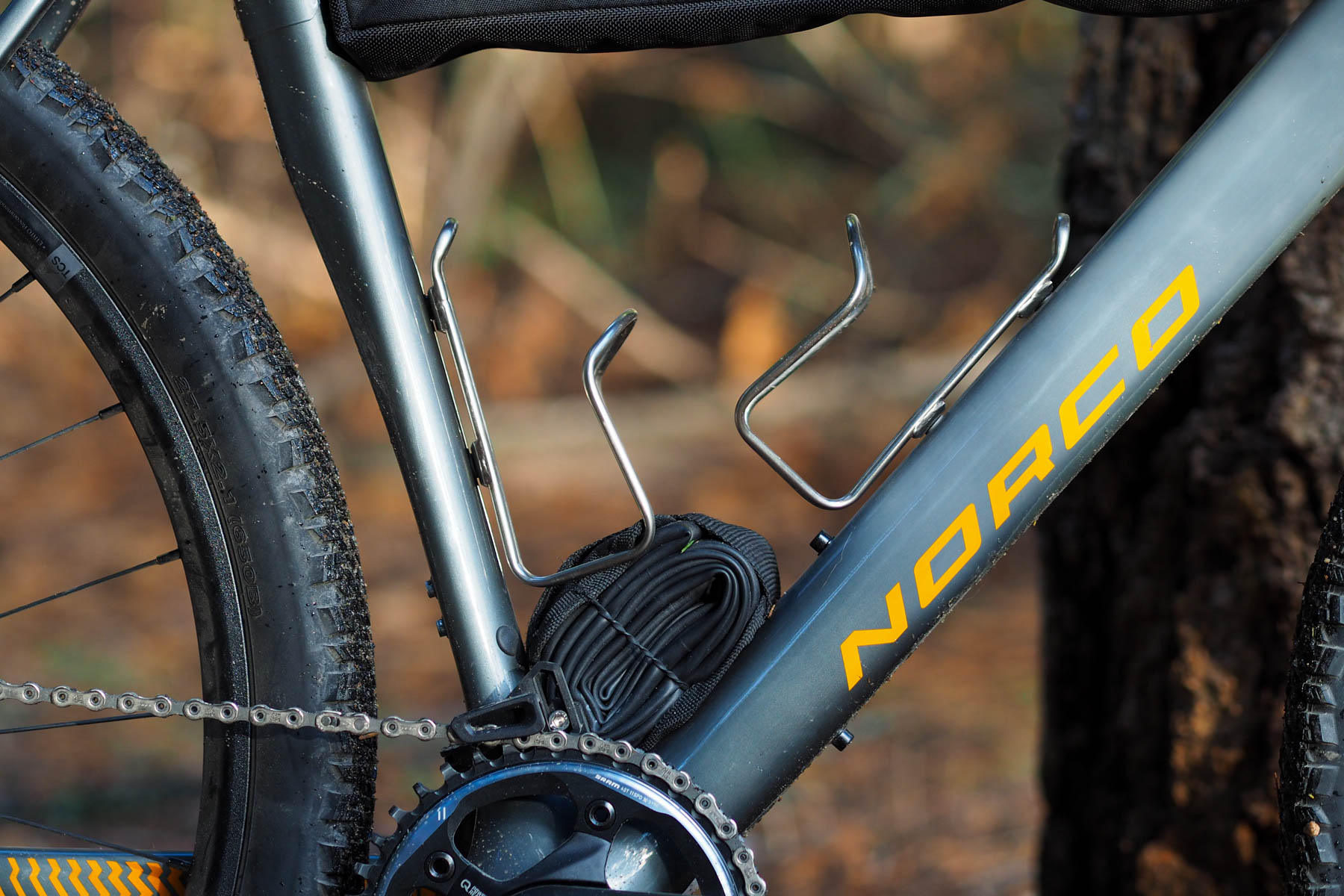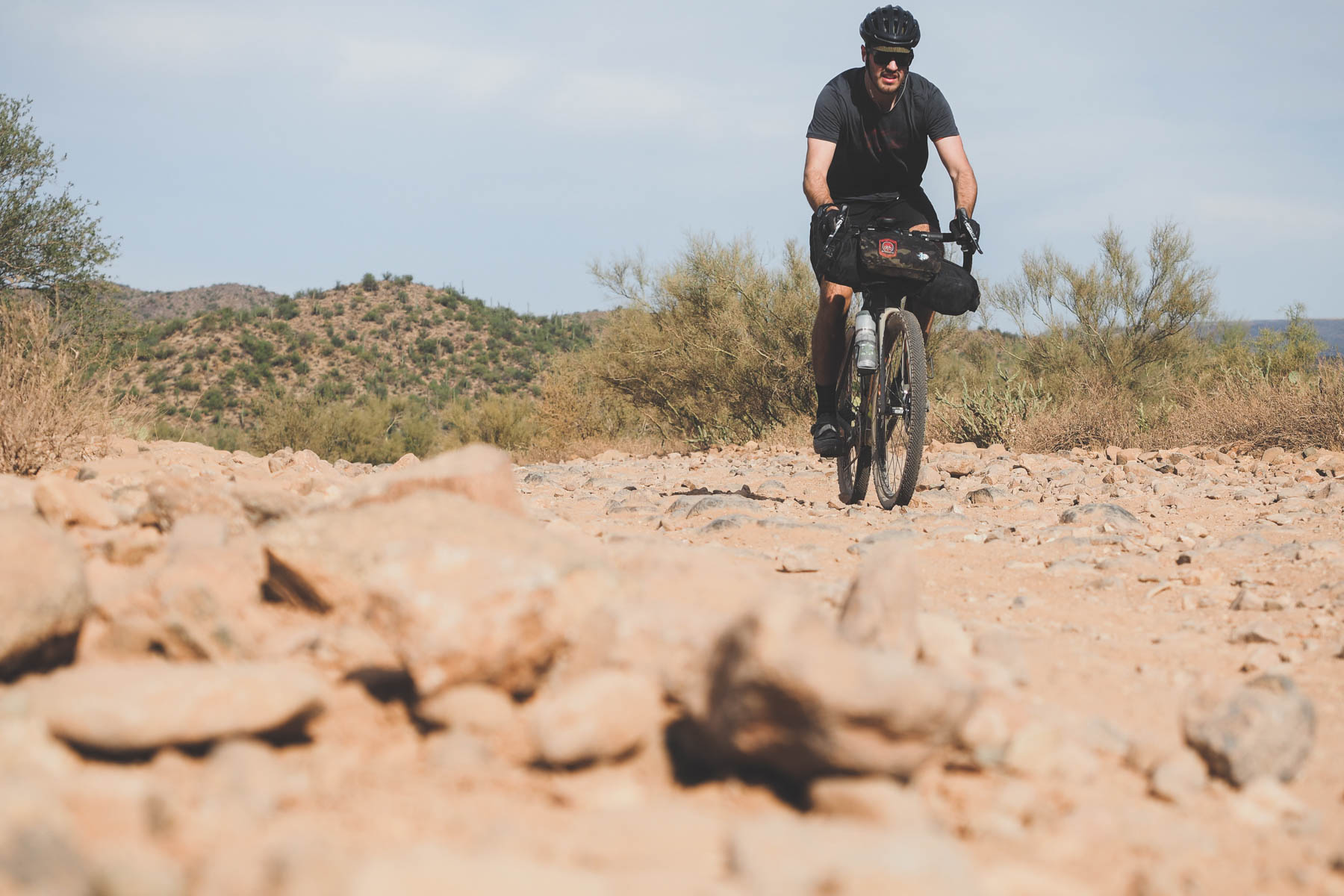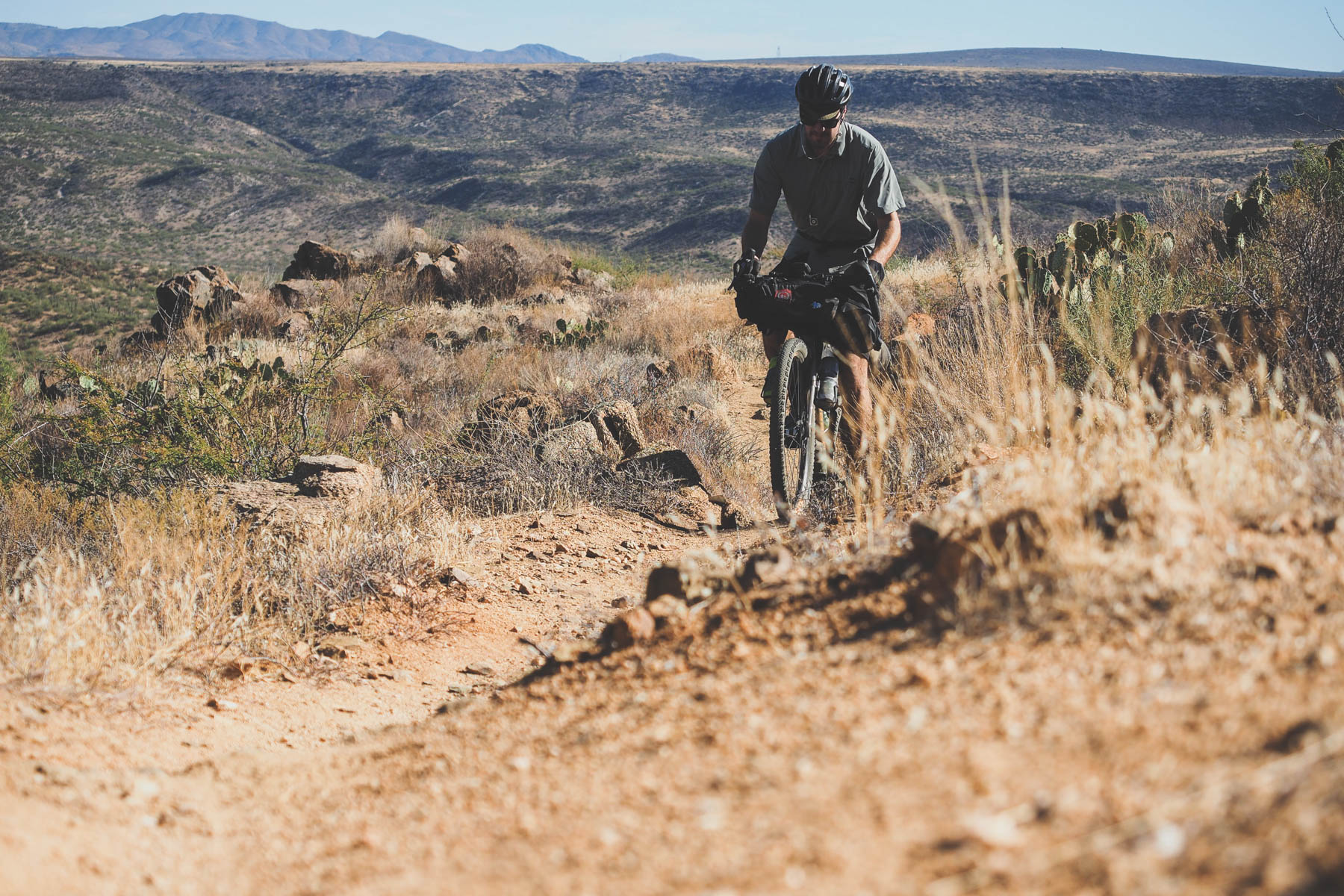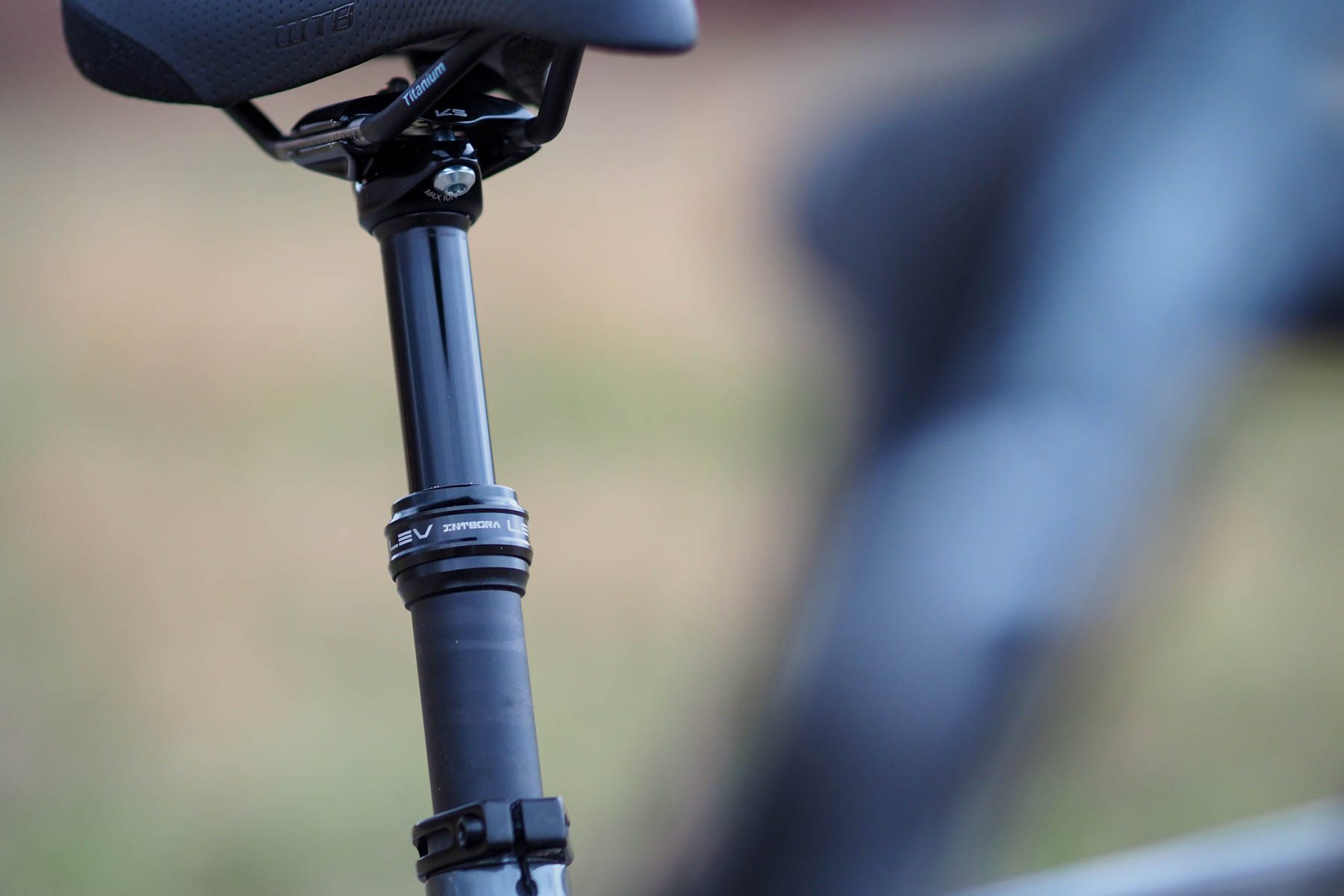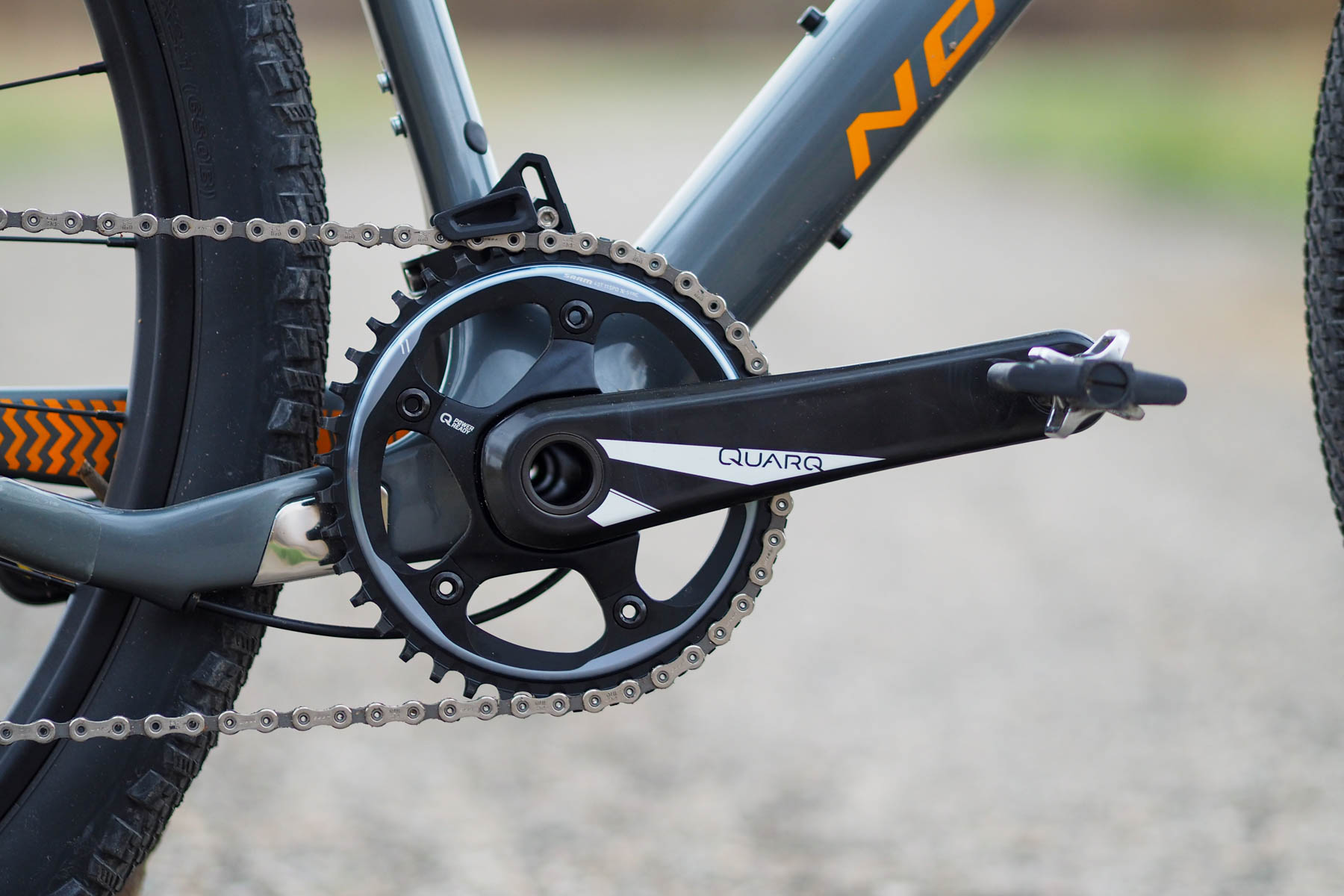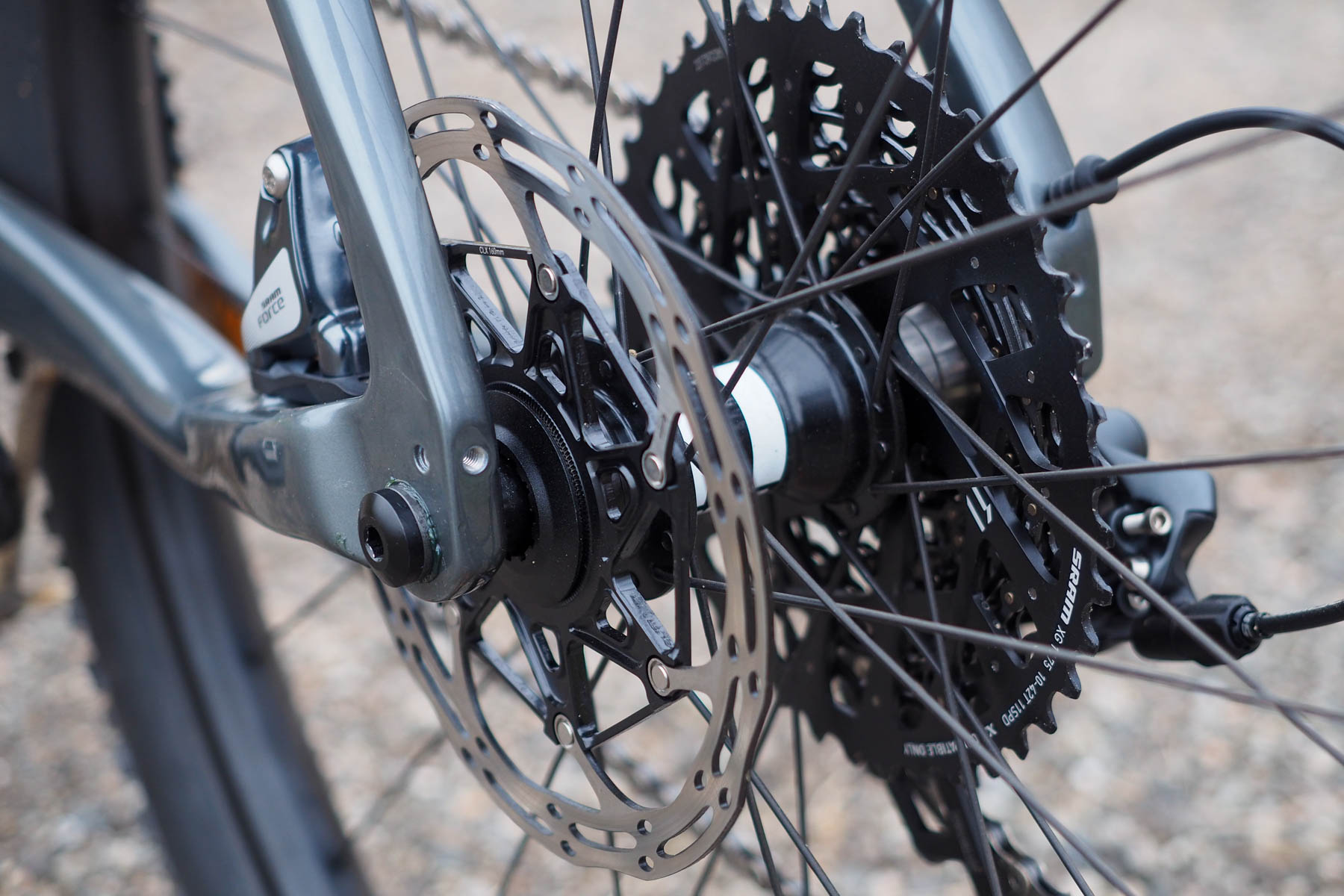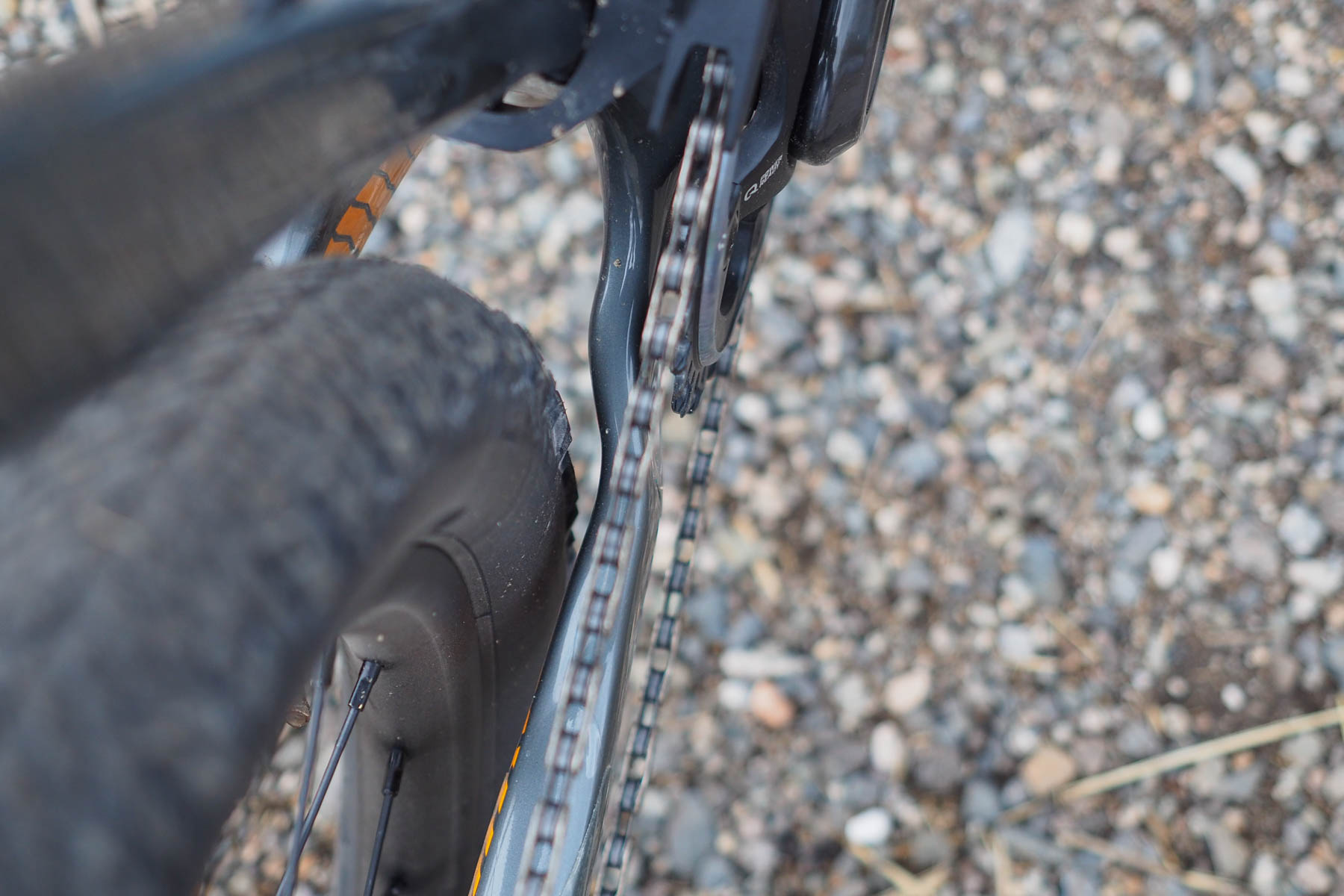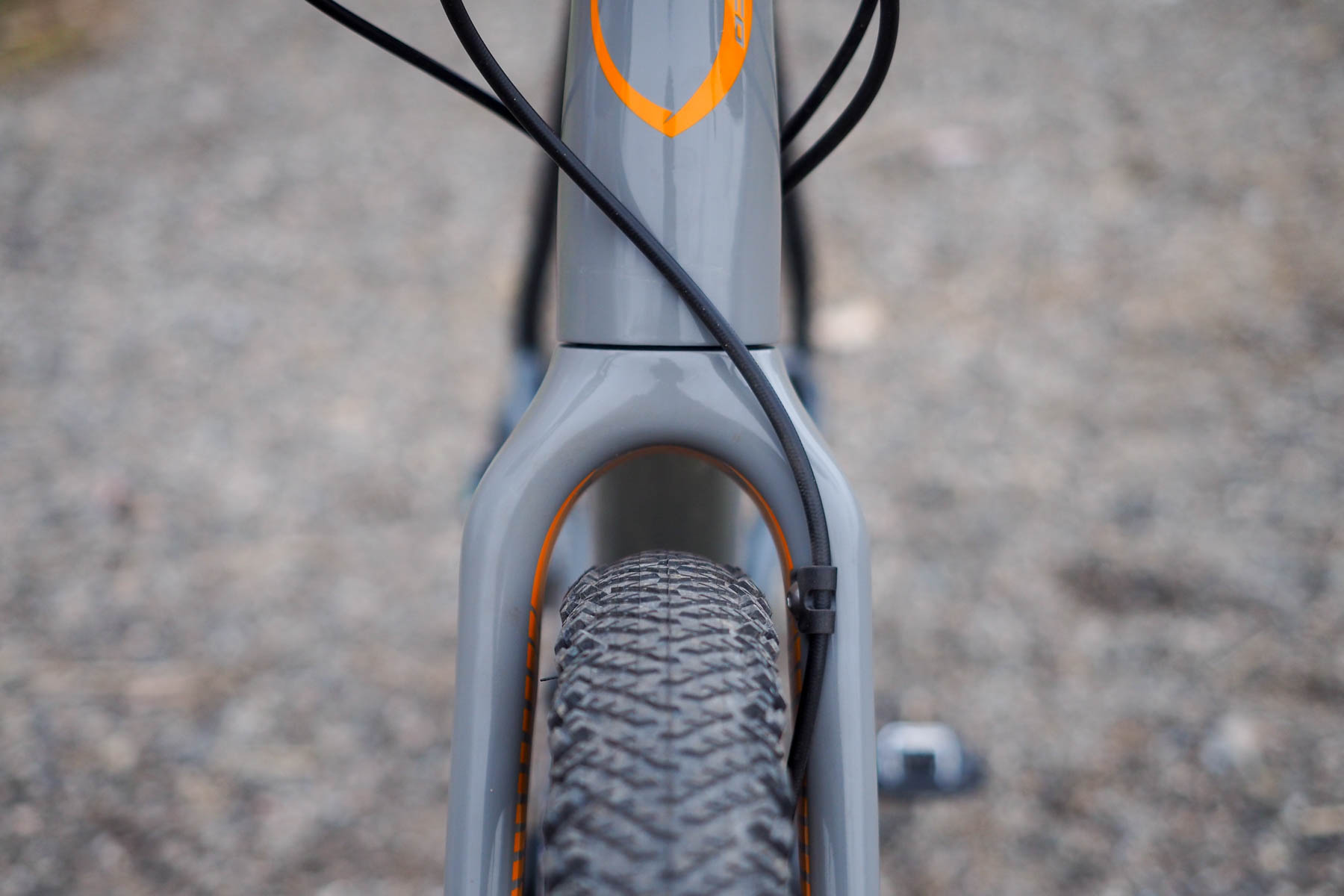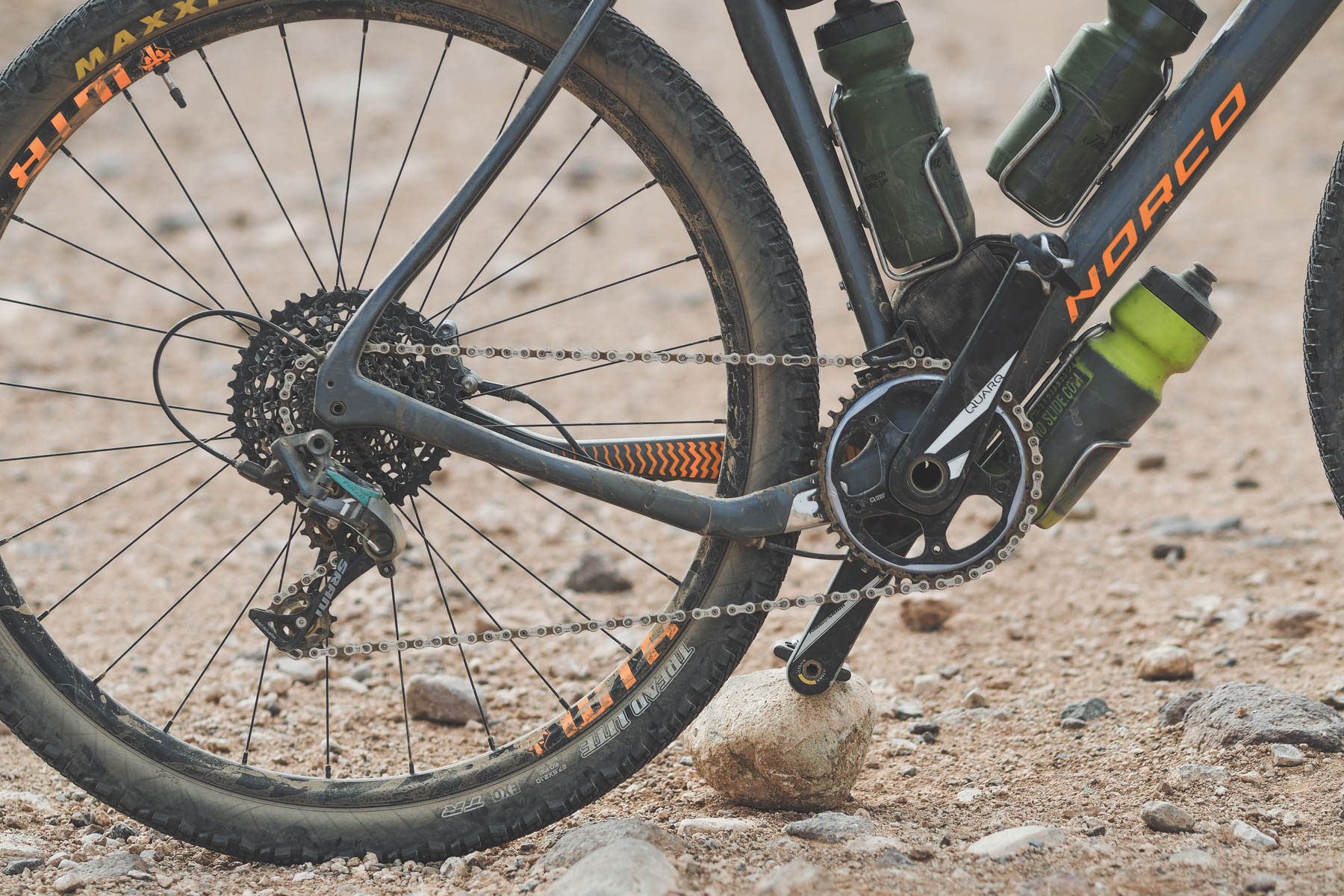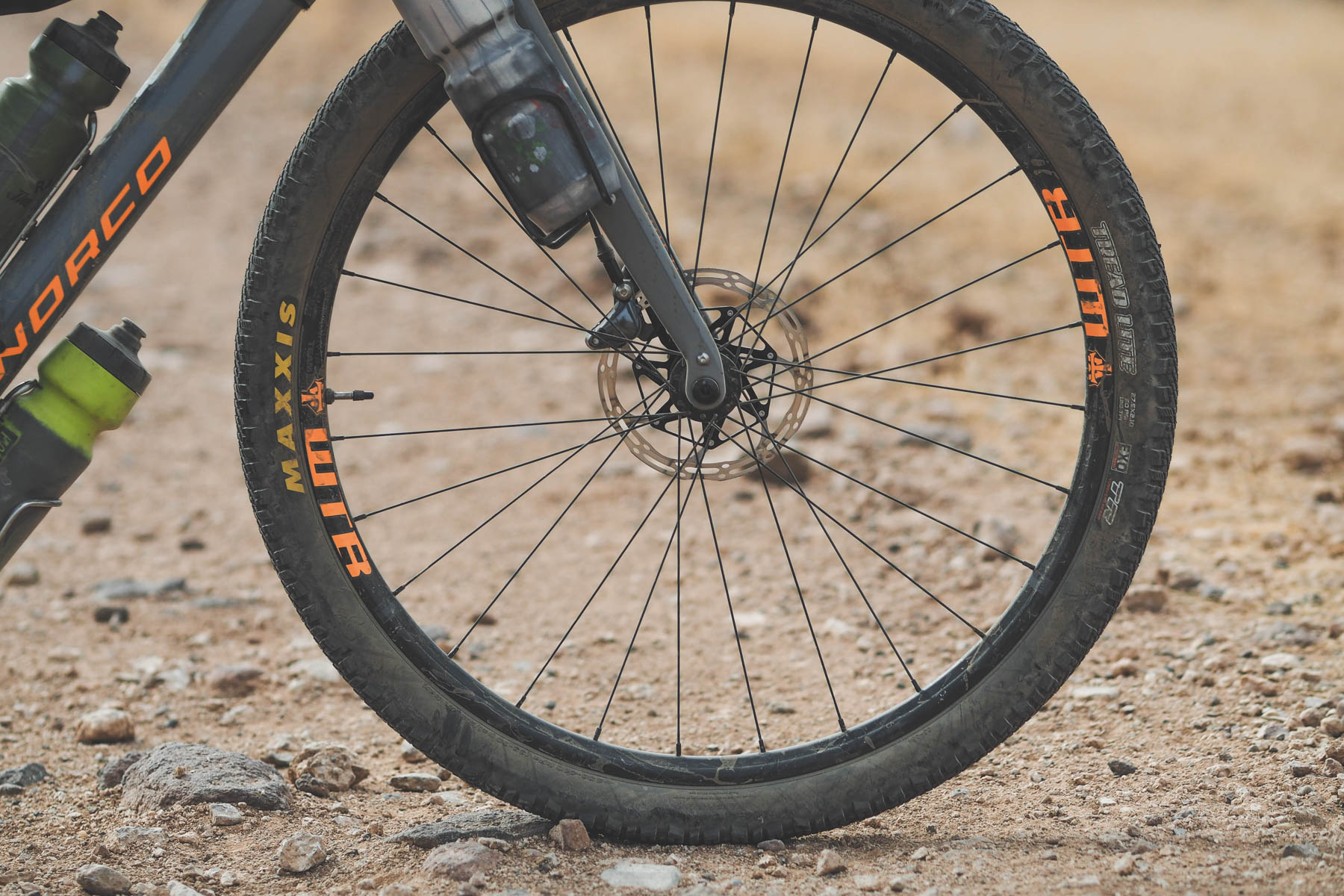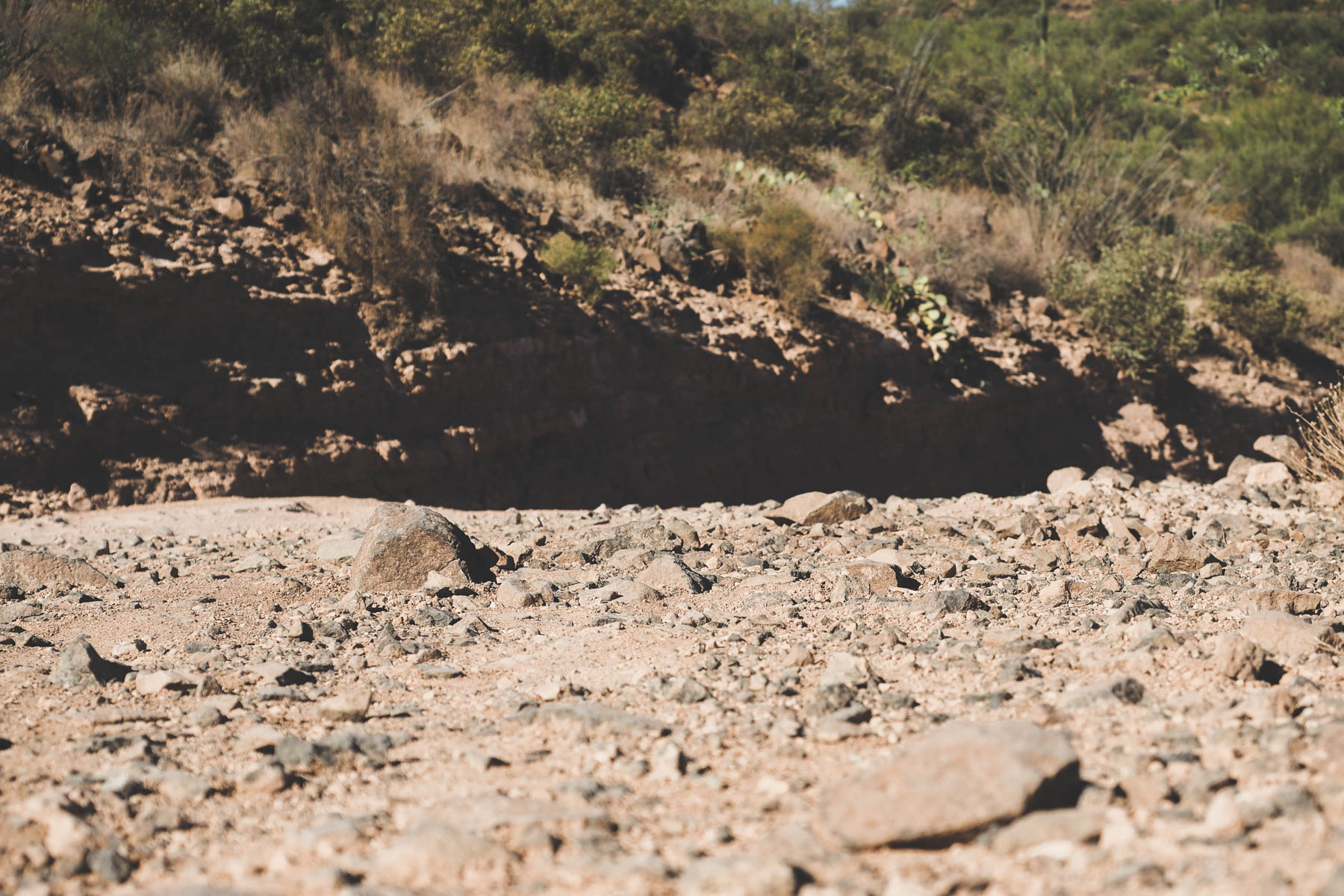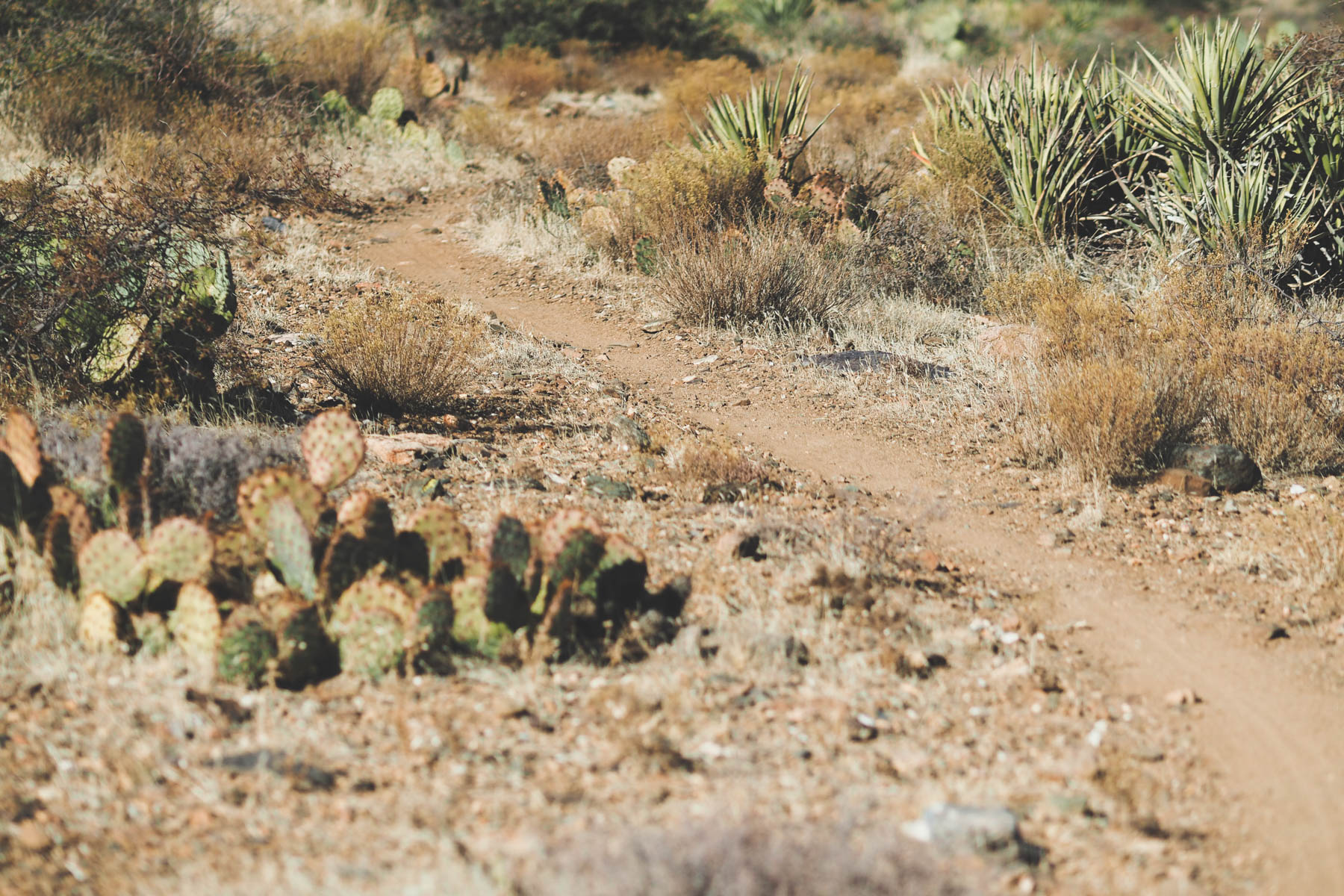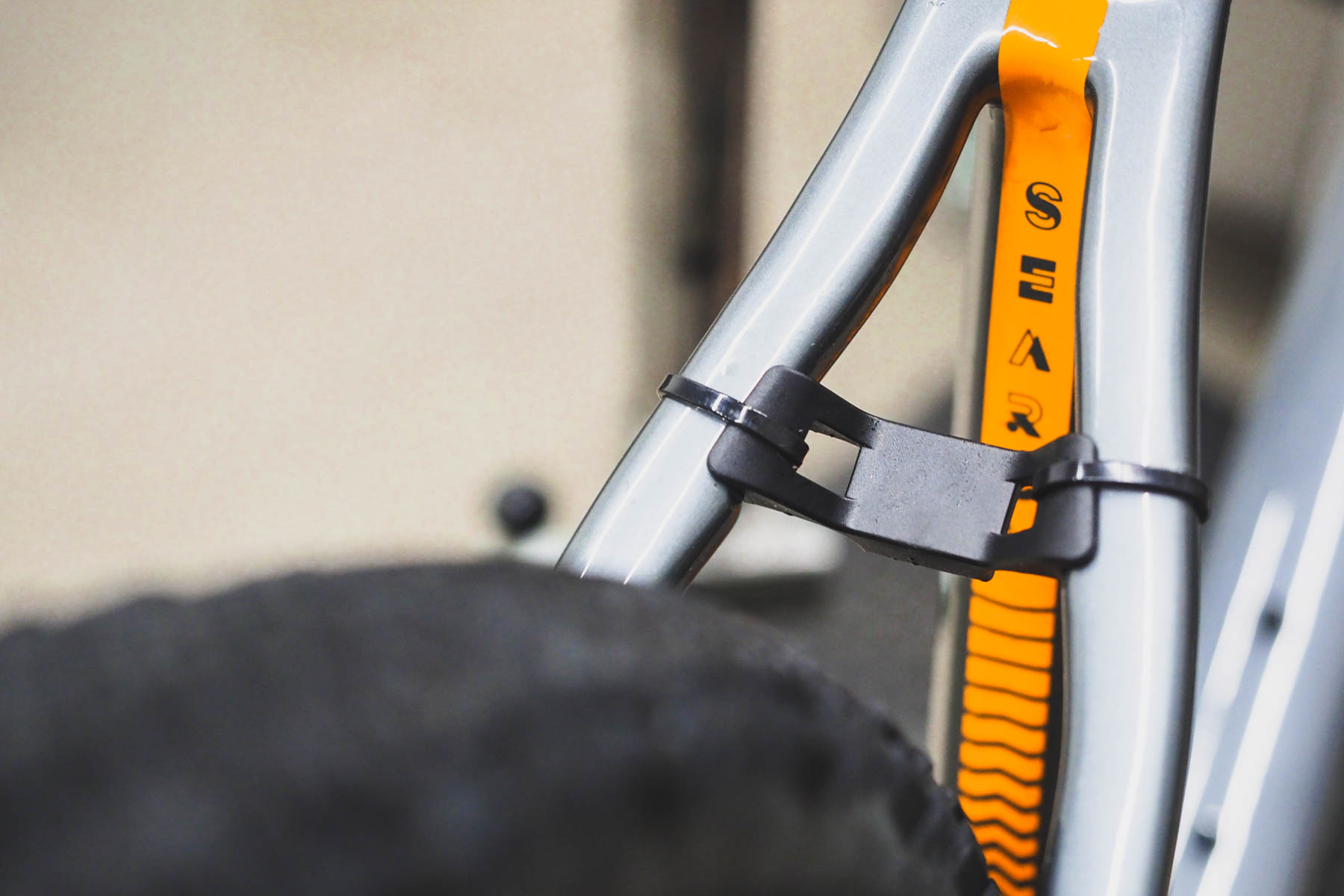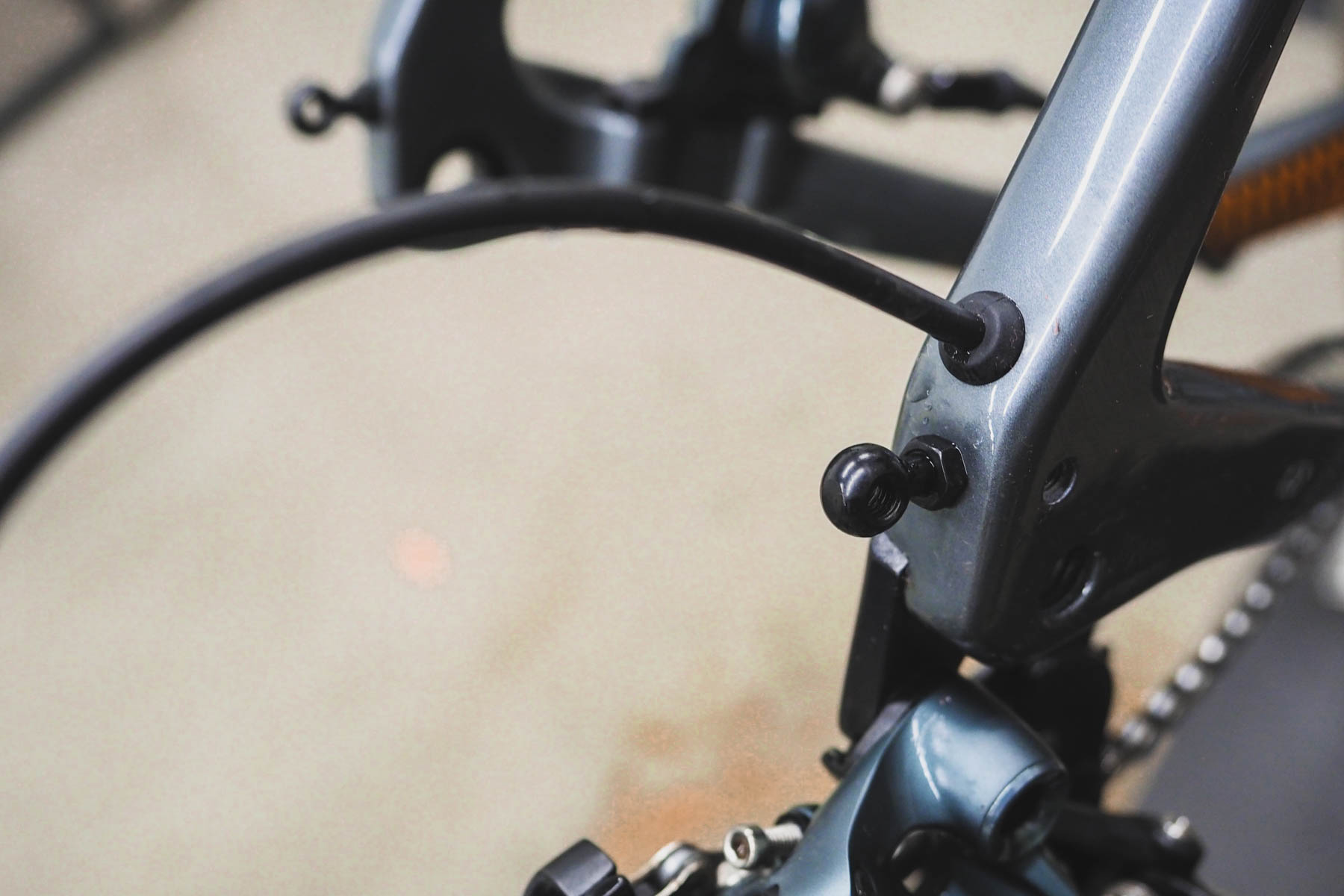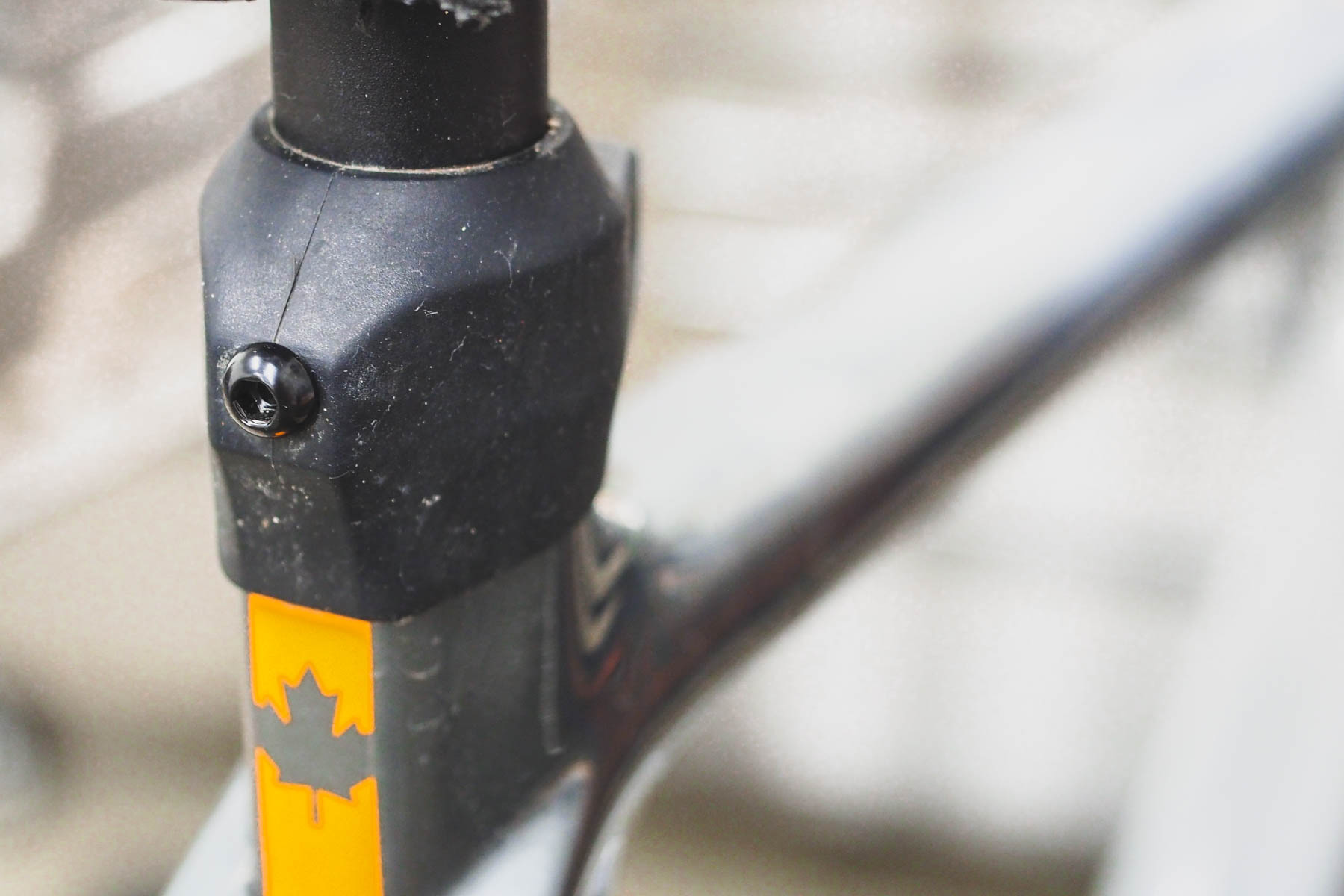Norco Search XR Carbon Review: Some Like It Rough
Share This
Norco’s revamped Search XR Carbon gets the latest ‘all-road’ standards, meaty 27.5 x 2.1” tires, and mounts to carry up to five water bottles. Miles was one of the first to get his hands on the Force 1 model and took it on some rugged desert tracks (and beyond) to see what a top-of-the-line ‘adventure-road’ bike can do. Here’s the full review…
For the last year and a half I’ve kept a close eye on the drop-bar gravel bike scene. All in an effort to consolidate my addiction into two bikes that can handle everything. My perfect pair of bikes would include a 27.5+ hardtail for technical, singletrack heavy riding and a drop-bar gravel bike that is tailored for forest service road exploration but can still handle some light singletrack.
There are plenty of bikepack-ready hardtails on the market, many of which we have reviewed, varying from carbon race bikes to beefy steel exploration machines. However, the ‘all-road’ category is a tricky one. Coming from a mountain bike background, I’ve found many of these bikes to feel less stable loaded up with gear. And with some, the aggressive riding position and limited tire clearance can be restrictive to more adventurous riding. Some of the latest options have been reviewed here, but due to their particular specs, standards, design, and capabilities, choosing the right bike becomes ever more analytical. Plenty of us want to keep up speed on the tarmac, smash the gravel, and navigate singletrack all on one bike that is still capable of handling some camping gear and other essentials. Some of us want to go fast… and there are increasingly more options becoming available to do so, including the Norco Search XR Carbon.
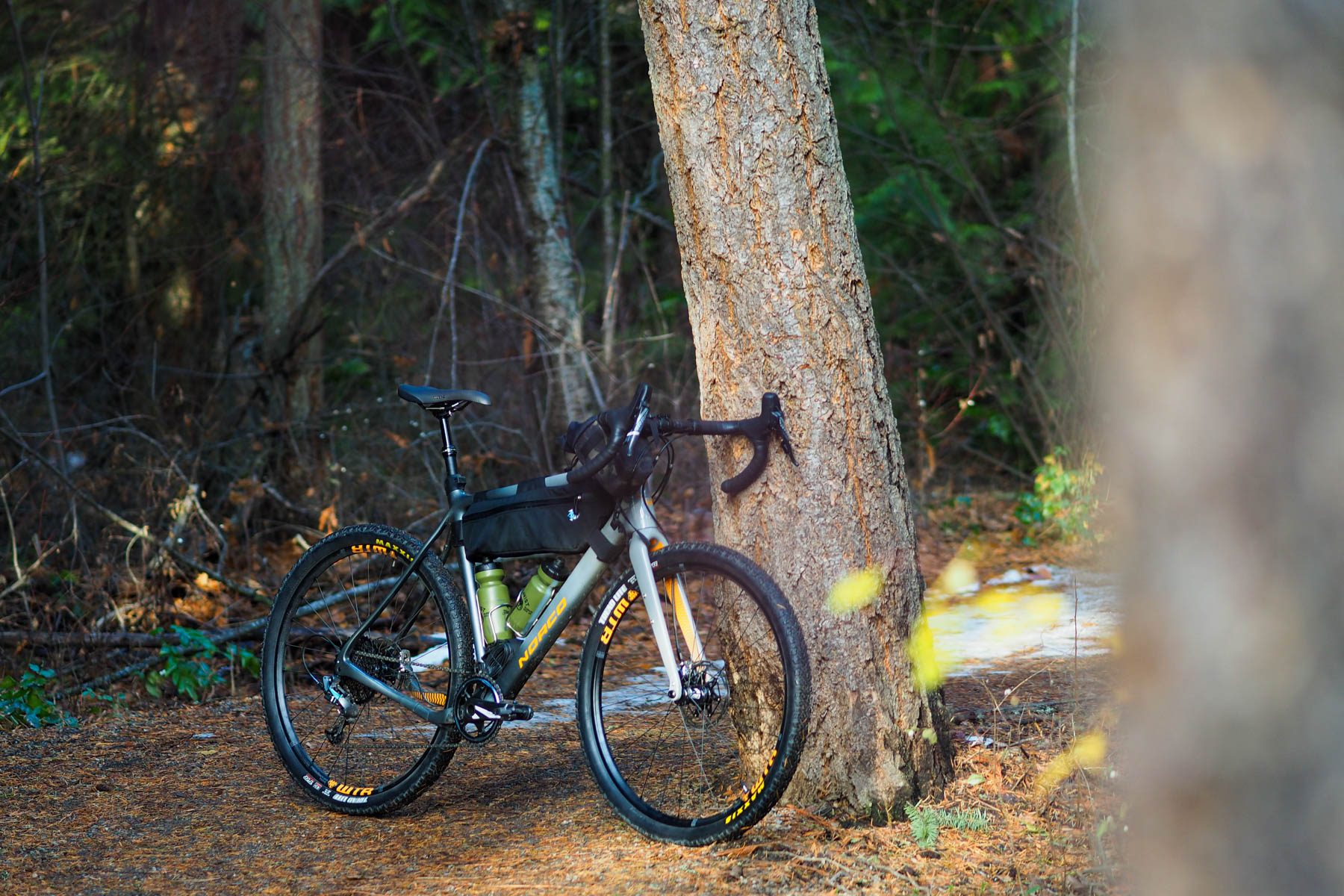
- Highlights
- Frame: Carbon
- Seatpost: 27.2mm
- Bottom Bracket: PressFit 86
- Hub specs: 142x12mm (rear); 100x12mm (front)
- Max tire: 27.5×2.1″ / 700Cx45c
- Weight: 21lbs (Large)
- Price: $4,199 (Force 1)
ALUMINUM, STEEL, AND CARBON
Norco’s popular Search lineup has been around since 2015, but the 2018 ‘XR’ iteration is an entirely different bike, creating a class of its own. There are some similarities however, like the option for a carbon or steel frame. Strangely enough, the latter was not offered for the 2016 or 2017 Search, coming only in aluminum or carbon. This year, Norco released more options than you could imagine and stuck with using the more desirable frame materials of carbon or Reynolds 725 chromoly steel. For those not for larger tire clearance and the bikepacking -friendly features of the XR series, Norco still continues to offer the much loved standard Search carbon and aluminum models in various builds for different budgets. Besides the addition of more mounts on the fork and downtube, and hidden rack and fender mounts, the XR models sport a lower and longer geometry that lend to its comfort and control over rough terrain and while climbing. For the sake of checking out the newest and most interesting of the bunch, we took the opportunity to test the Norco Search XR Carbon Force 1, shod with 650B x 2.1” Maxxis Tread Lite tires. Oh yeah, and it has a KS LEV dropper post… can you blame us?

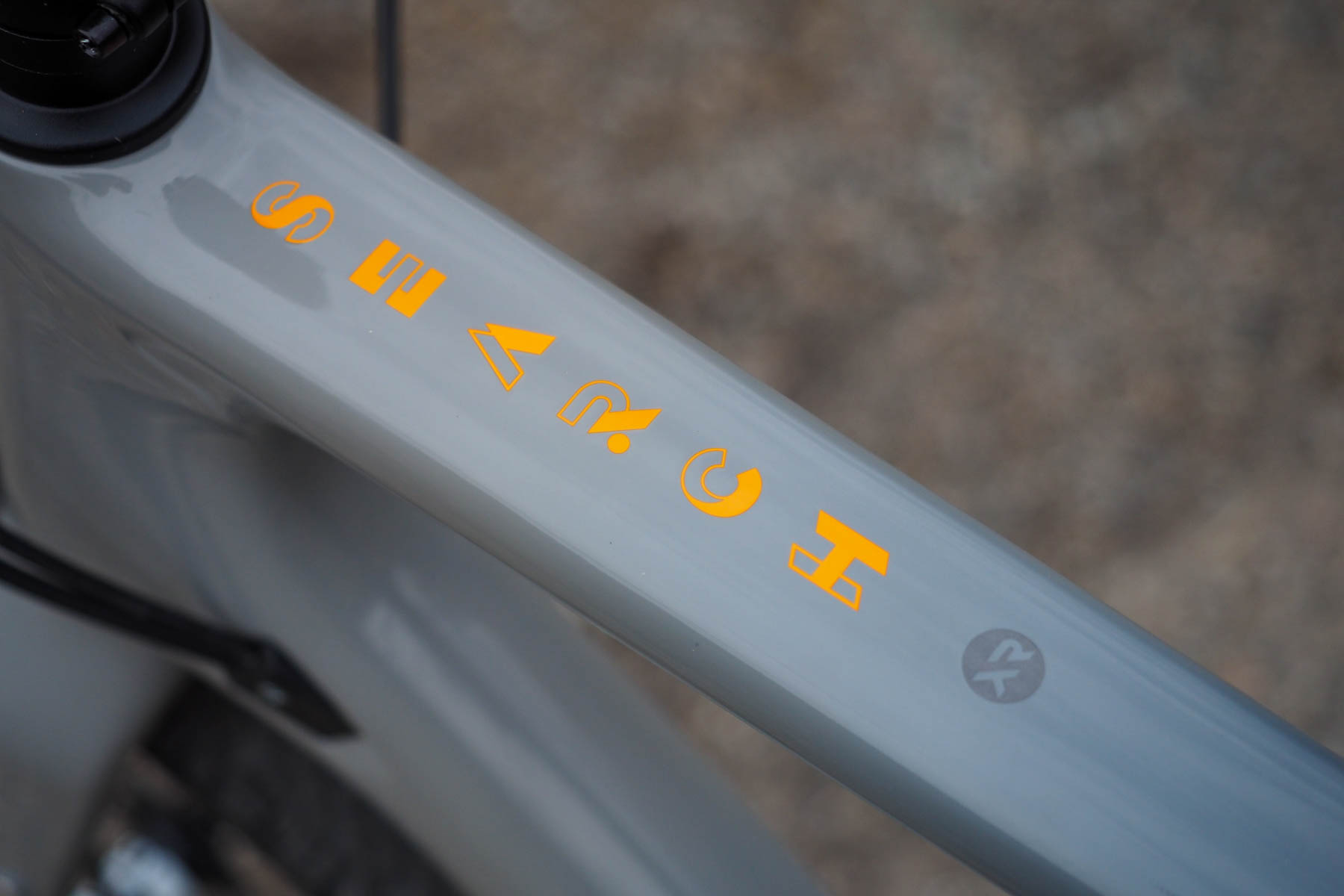
Over the past few years, besides riding almost exclusively rigid steel mountain bikes, I’ve spent a fair amount of time on a couple drop bar gravel bikes. A Norco Threshold A2, an entry level cyclocross, started things off for me, but lacked bottle mounts and aluminum wasn’t the most comfortable for long distance riding. The largest tire I could ram in there was around 1.5” wide (40mm)… and that left no extra room for debris or fenders. Next up came a 2016 Kona Sutra LTD, a steel workhorse that offered rack and fender mounts, mounts on the downtube, and a build that was much more suited to the demands of bikepacking. Still, once I crammed in some 700 x 2.1” WTB Nanos, as Kona recommends nothing larger than 2.0” tires, there was next to no clearance left under the crown of the fork and between the chainstays. This setup was as close as I got to making it work, but I didn’t quite fall in love with the longer reach on the Sutra LTD that has been known to encourage buyers to size down. After accidentally taking a stab at bikepack racing this past summer, I saw first hand the benefits of a lighter bike and lighter kit. Riding and pushing around less weight – especially in a race scenario — sounds pretty attractive after riding my heavy, but beloved, Surly Krampus for five days with little sleep.
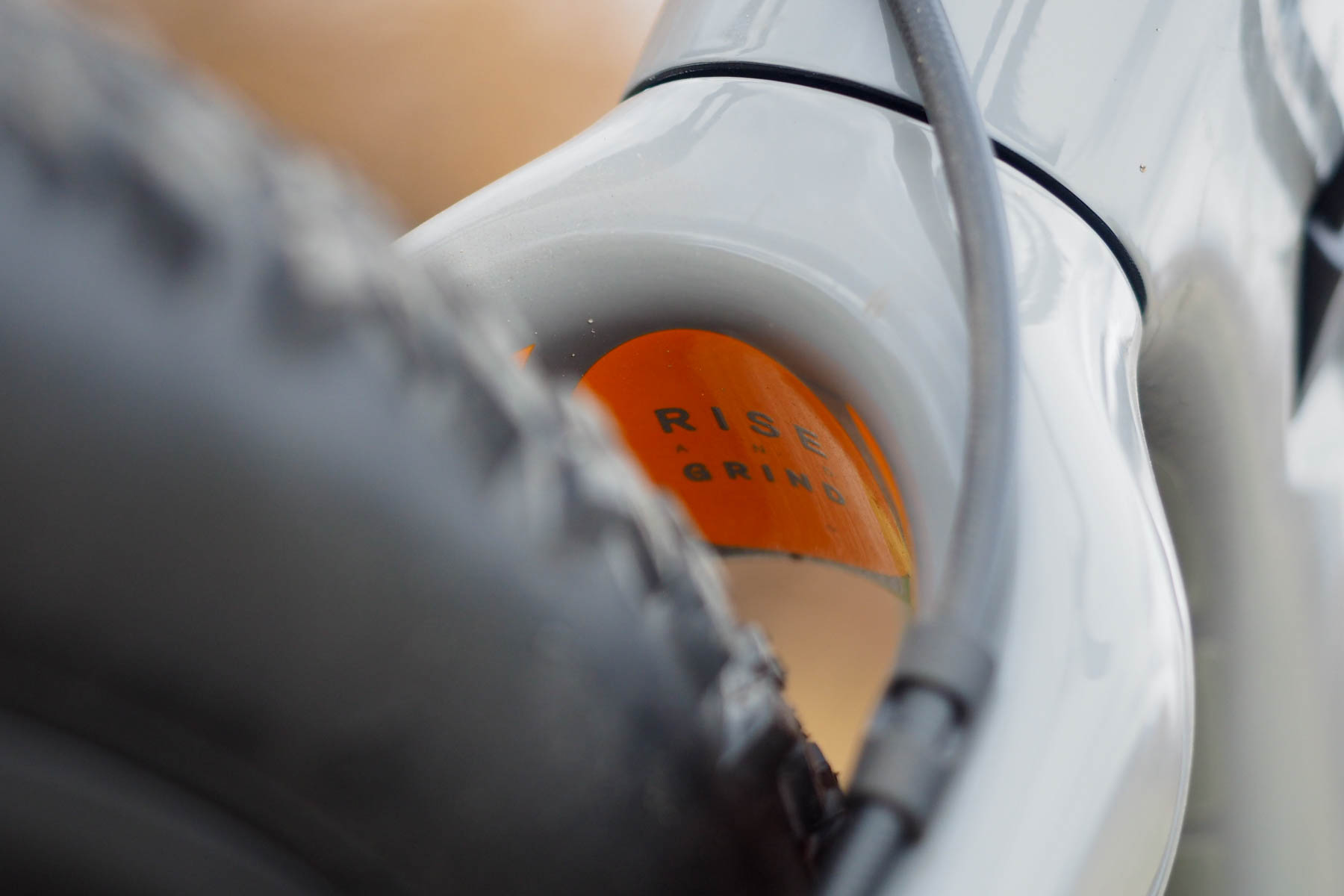
For those who haven’t experimented much with carbon bikes suited for bikepacking, the Norco Search XR Carbon is one of those bikes that truly exploits the material’s benefits. It didn’t take long to win me over. Besides being incredibly light, carbon is much stronger than some people might assume and has a snappy, playful feeling that doesn’t suffer when loaded for a multi-day trip. The Search XR does a great job at dampening vibrations on both road and gravel, creating a ride that promotes longer days and faster riding. After a straightforward tubeless setup — afforded by the WTB i23 rims and Maxxis’ Tread Lite 2.1” tires — the ride became that much more supple by running lower pressures. And of course, the bigger and softer tires also encouraged me to push further out past the gravel onto nearby trails.
“Adventure-Road”
All-road, Gravel, Gravel-Plus, or in Norco’s case, Adventure-Road. There are a growing number of bike manufacturers tossing around buzzwords like these, and in select cases, we’re eating it right up. The Norco Search XR Carbon keeps up with the trends with ample clearance for standard 700 x 45c as well as 650B mountain bike tires with plenty of room for widths up to 2.1”. Not only did Norco do a good job adventure-terrain-proofing their standard Search lineup by adding various wheel and tire compatibilities, they also threw in a few curve ball features that were both appealing from a bikepacking perspective and eyebrow raising for everyone else. The Search XR is a drop bar all-road adventure rig that will leave a lot of folk asking questions.
I expected the majority of my riding to be on gravel and singletrack with some longer endurance-style rides on mixed roads. Although this is not a long-term review, I rode the Search XR considerably on almost all types of terrain you are likely to encounter, including some you won’t depending on what hemisphere you reside in. My month-long sabbatical began in the Central Okanagan of British Columbia, just as mother nature decided to greet us with lower than average temperatures and a bit of snow. Wet pavement, snow covered trails, and sloppy gravel roads filled the last of my fall riding. With a stroke of luck I found an ultra-cheap flight to Phoenix, Arizona where I could pick up my reviewing duties in the sun, sand, and a wealth of native flora that were quite foreign to me.

Who, or what, is the Norco Search XR for?
The Search XR’s geometry aligns closely with other similar offerings we’ve seen recently; a longer top tube, a slightly more aggressive head tube angle at 72º, and shortened chainstays; although not the shortest we’ve seen in the all-road category. All of this really jives with the 650b wheels, creating a light, nimble, and responsive ride that continuously begs to be taken off-road. The Search XR also has a longer than average wheelbase, from 970mm to 1,054mm depending on the frame size, which adds to the comfort and stability of the bike on longer rides, and this was quite noticeable when loaded with gear. I’ll also add that toe-overlap has been an issue on other drop-bar gravel bikes in the past, but I had no problems with the Search XR, which was greatly appreciated during tight and twisty singletrack.
That said, the long 110mm stem took away from the bike’s ability to tackle some of the more technical features and trails, throwing me into a somewhat aggressive race position. This also made it seem a little awkward to even think about using the dropper post. Off came the stock 110mm stem and on came a 70mm stem with a 15º rise, a big change, but one I believed to be necessary to unleash the bikepacking potential of the Search XR. In this setup, I felt I was in a better position to use the dropper on descents and through chunkier sections of trails. Whereas with the longer stem I felt the dropper was unnecessary and would be better suited to a rigid post for fast, aggressive gravel riding.
So who is the Norco Search XR Carbon for? I think that ultimately depends on where you want to take it, which will then coincide with how you set it up. Straight from Norco it is set up to let you take on a bit of everything, which is what makes it such a joy to ride. Some people may choose to customize it slightly to match their individual needs, like swapping the stem, seatpost, or chainring, for example.
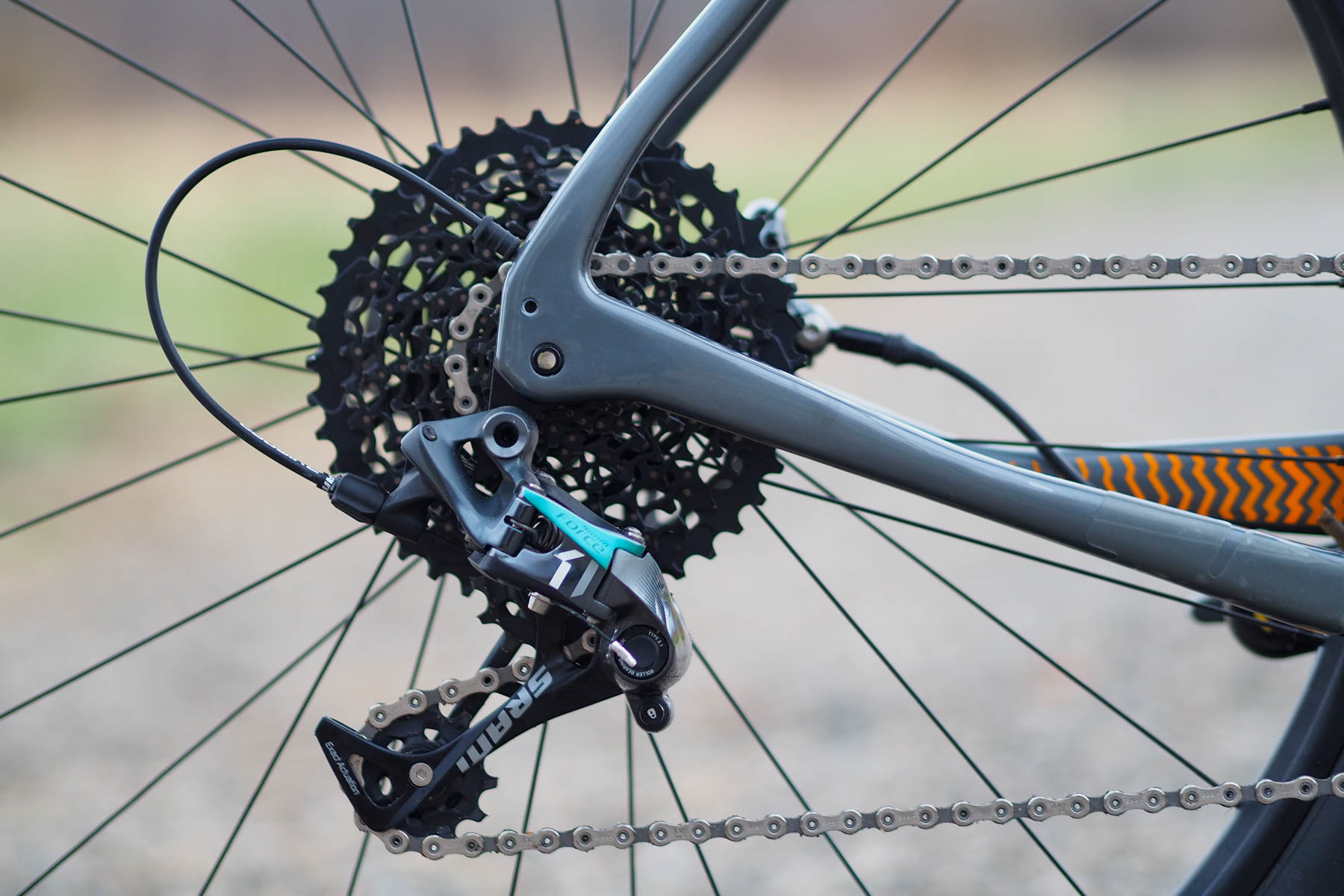
Norco Search XR Carbon Force 1 Build
Being the top of the line model, between the Search XR and Search lineups (both carbon and steel), there isn’t a whole lot missing in terms of components; not surprising given the top tier price tag. Although the gearing would be a little high for my usual riding, I decided to stick with the SRAM 40T X-Sync ring as I was saving the majority of my riding for Arizona gravel. If time permitted, I would have looked into options for a smaller front chainring or a rear cassette expander for some lower climbing gears. This only ever became an issue on steep and loose climbs, which may have been tolerable on knobbier tires, but had me slipping around and pushing my bike up some of the hills in Tonto National Forest.
I had zero issues with the Force drivetrain and the high-end SRAM XG-1180 cassette, which ran smoothly and quietly for the duration of my testing period. Just a quick wipe down with a rag, and a light chain lubrication kept things shifting smoothly and quietly.

The DT Swiss 350 hubs are an excellent option for bikepacking as maintenance is virtually tool-free, and you’re getting the same durability and performance as the higher priced DT Swiss 240 hubs with only a slight weight penalty. The DT Swiss 350 hubs are also as close as it gets from being completely silent, perhaps not as quiet as the Onyx hubs Skyler reviewed recently, but did not distract me from soaking in the wilderness surrounding me. The relatively low engagement of the 18 tooth ratchet resulted in a few more pedal strikes on some of the technical trails I found myself on, but depending on where you plan to ride this may not be an issue. This ratchet is also an easily upgradable part, which will decrease the 20° rear hub engagement to either 10° or 6.6°.
Frameset
- Frame Search XR Carbon
- Fork Search XR Carbon
- Color Grey
Drivetrain
- Front Der n/a
- Rear Der SRAM Force 1
- Cassette SRAM XG 1180 10-42t
- Chain SRAM PC-1170
- Crankset SQUARQ Prime Carbon 1 X-Sync 40t
- Shifter SRAM Force 1x
- Brakes & Rotors SRAM Force Hydraulic Disc, 160mm
Components
- Headset Angular Sealed Cartridge Bearings
- Stem Norco SL Alloy
- Handlebar Easton EC70 AX, 16 deg flare
- Grips Norco Super Griptacular w/gel
- Seatpost KS LEV Integra Dropper Post, 27.2 x 65mm
- Saddle WTB Volt Team w/ Ti Rails
Wheels
- Front Wheel WTB Frequency Team i23 27.5, Thru-Axle, 12 x 100mm
- Rear Wheel WTB Frequency Team i23 27.5, Thru-Axle 12 x 142mm
- Tires Maxxis Tread Lite 27.5×2.1″, Folding / Tubeless Ready
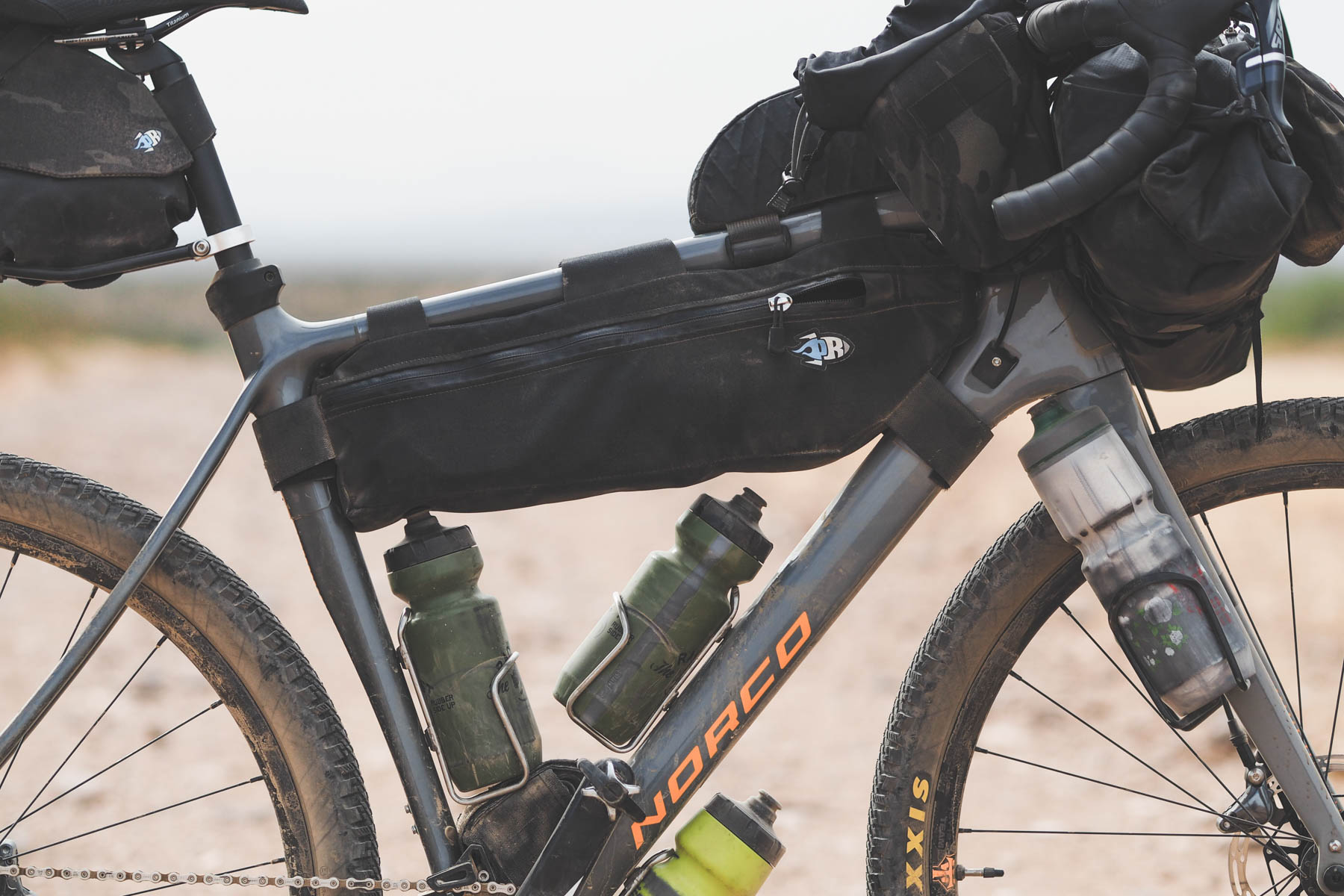
I had a few issues early on with the KS LEV Integra dropper post not dropping, due to insufficient cable tension caused by stretch, so nothing directly related to the post itself. It’s also a bit of a hassle to gather up any extra slack to tighten the tension from the post if the barrel adjuster had already been cranked, and definitely not something I’d want to deal with on the side of a trail.
The Maxxis Tread Lite tires are semi-slick mountain bike tires, and although the centre tread is very minimal there is a decent side knob that still allowed for traction on tight corners. The tires offered reasonable performance in most terrain I rode on, and really held up well on the rough gravel roads and dry singletrack on the Black Canyon Trail. I was a little worried I would be dealing with sidewall repairs around every corner, due to the 120TPI casing of this race tire, but after nearly 300 miles of Arizona riding the tires are repair free and looking good. Running tubeless at pressures between 25 and 40 PSI meant the bike felt a big sluggish on pavement. And on a few longer (~100km) day rides where my route was half pavement, half gravel I was happy to get off the smooth stuff and onto dirt. This could of course be overcome by pumping up to recommended pressure of 60 PSI during long sections of pavement or by swapping over to some skinnier 700C wheels as the frame works with both sizes; but I am the kind of rider that prefers to set and forget.
The dusty and dirty conditions I encountered led to zero mechanical issues to speak of, and the only real problem that stood out was the regular pedal strikes on the fist-sized rocks that riddled the trails due to the Search XR’s low bottom bracket height (-70mm BB drop/275mm BB height for the 58cm). But then again this isn’t a drop-bar mountain bike, so that didn’t surprise me.
Some people will be put off by Norco’s decision to use a press-fit bottom bracket for a bike that is clearly outfitted to tackle some fairly remote terrain. I will say I experienced no problems or creaking during my rides, and it is just as silky smooth as it was when we assembled it. The Search XR steel models are also spec’d with press-fit bottom brackets as well, so unfortunately there is no winning there for some. More specifically, the entire line is equipped with PF/BB86, a road standard adopted by Scott, Giant, Pivot, and many others that allows a wider bottom bracket shell that doesn’t affect crank width. It’s worth noting that Wheels MFG makes a threaded PF86 BB that supposedly makes changing out bearings a breeze, and creaks a thing of the past.

Ridin’ Dirty with the Norco Search XR Carbon
I jumped on the opportunity to fly into Phoenix, Arizona this past month to tackle some new terrain (I’ve never travelled to Arizona). Little did I know that I’d be putting the Search XR through some of the roughest trails and roads around. Although I admit to slowly easing into things with the Search’s carbon frame, by the end of the week I knew this bike was not something to baby and wipe down with a microfibre cloth after each ride. It begs to be taken on the rough stuff, and boy does it like it.
First, this bike is much lighter than the steel bikes I am familiar with and this has a huge impact on the feeling of the bike when fully loaded. Although there were some definite necessities in my packlist due to some remote sections, lack of resupply points, almost no water sources, and chilly nights, I was still amazed at how light the entire setup felt. To put things into perspective, I carried no backpack and almost always had 5 full water bottles, a lightweight 2-person tent, summer sleeping bag, a bit of camera equipment, canister stove, and all of the other important items for desert style bikepacking. I rarely felt the Norco Search XR Carbon was outside of it’s comfort zone anywhere along my route which includes the city of Phoenix, rugged gravel service roads through Tonto National Forest, and the popular Black Canyon Trail’s singletrack. Whether it was long stretches of washboarded gravel roads or rocky and narrow singletrack, I was constantly surprised at what this bike could handle; and more importantly, what I could ride comfortably for multiple 8+ hour days in a row.
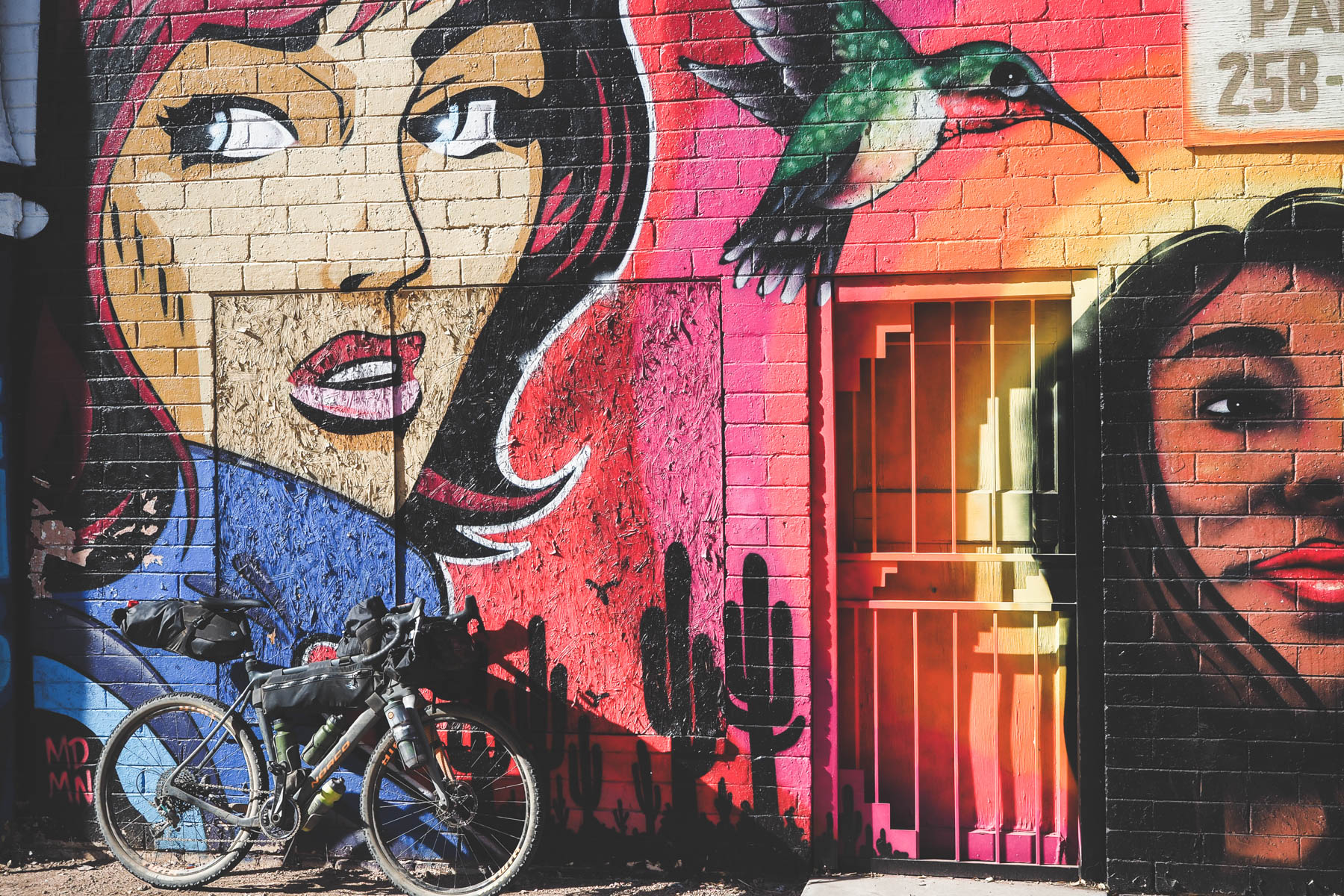
With a good tubeless setup and my slightly modified positioning on the bike, I’m willing to say this is perhaps the most comfortable bike I’ve ridden in a very long while. It also happens to be the most expensive bike I’ve had the pleasure of riding for any length of time, and I was ultimately blown away by its performance in Arizona. The roads and trails I navigated were primarily shared with full suspension mountain bikes and aggressive looking all-terrain-vehicles, and were definitely on the rougher end of the spectrum when it comes to all-road style riding. Even so, my hands, back, and bum have never felt better!
It’s worth mentioning some of the interesting details that sparked some conversations after the Search XR’s release, including DAS BOOT, SASSY, and NINJA. DAS BOOT is simply a rubber seatpost clamp cover designed to keep any gunk or water from entering the frame via the clamp area. It seemed to do its job just fine, and also includes a small hole and screw for a rear rack mount. SASSY or “Secretly Attachable Seat Stay Yoke” is an optional plastic bridge that acts as a fender mounting point if needed, and a zip tie on each side, it’s surprisingly sturdy enough to handle a fender. The lack of seat stay yoke adds to the ability of the Search XR to absorb chatter, and I think that definitely played a part in my comfort along the Fool’s Loop. NINJA refers to the “Not Instantly Noticeable Junk Attachments” are simple threaded inserts just behind the rear axle for fenders or potentially rack compatibility, which is often not ideal or impossible on a carbon bike.
- Model Tested Norco Search XR Carbon Force 1
- Size Tested Large (58)
- Color Grey
- Weight 21 lbs
- Place of Manufacture Taiwan
- Price $4,199 (CAD $5,599)
- Contact Norco.com
Pros
- Not a delicate carbon race bike that needs to be pampered, and can handle some surprisingly rough terrain with ease.
- Clearance for up to 27.5×2.1″ tires, accompanied by thru-axle hubs make a stable and reliable base. Also compatible with 700c tires from 28c up to 45c.
- Lightweight and ultra comfortable for long days in the saddle over bumpy trails and roads.
- Multiple bottle and accessory mounts make carrying water and bikepacking gear easy.
- High end components and a solid build.
- Size scaled for smaller riders means geometry is consistent and better proportioned for the rider.
Cons
- PF86 Press-fit bottom brackets will likely be a gripe for many people interested in this bike, but we had no problems.
- 3 bolt anything cage mount in the main triangle is of little use due to the small triangle, would have been nice to see those on the downtube.
- Gearing might be a little high for some loaded up for bikepacking, so a chainring swap or cassette expander may be needed.
- Dropper post is slightly awkward to use with the longer, stock stem.
- Not cheap. Although I do think you get what you pay for, and that includes a drop-bar bike capable of taking on most types of terrain right out of the box. Check out the XR Steel and XR Carbon Apex models for cheaper alternatives.
- A bit sluggish on pavement without pumping up to a higher pressure, as expected for 650b x 2.1” tires.
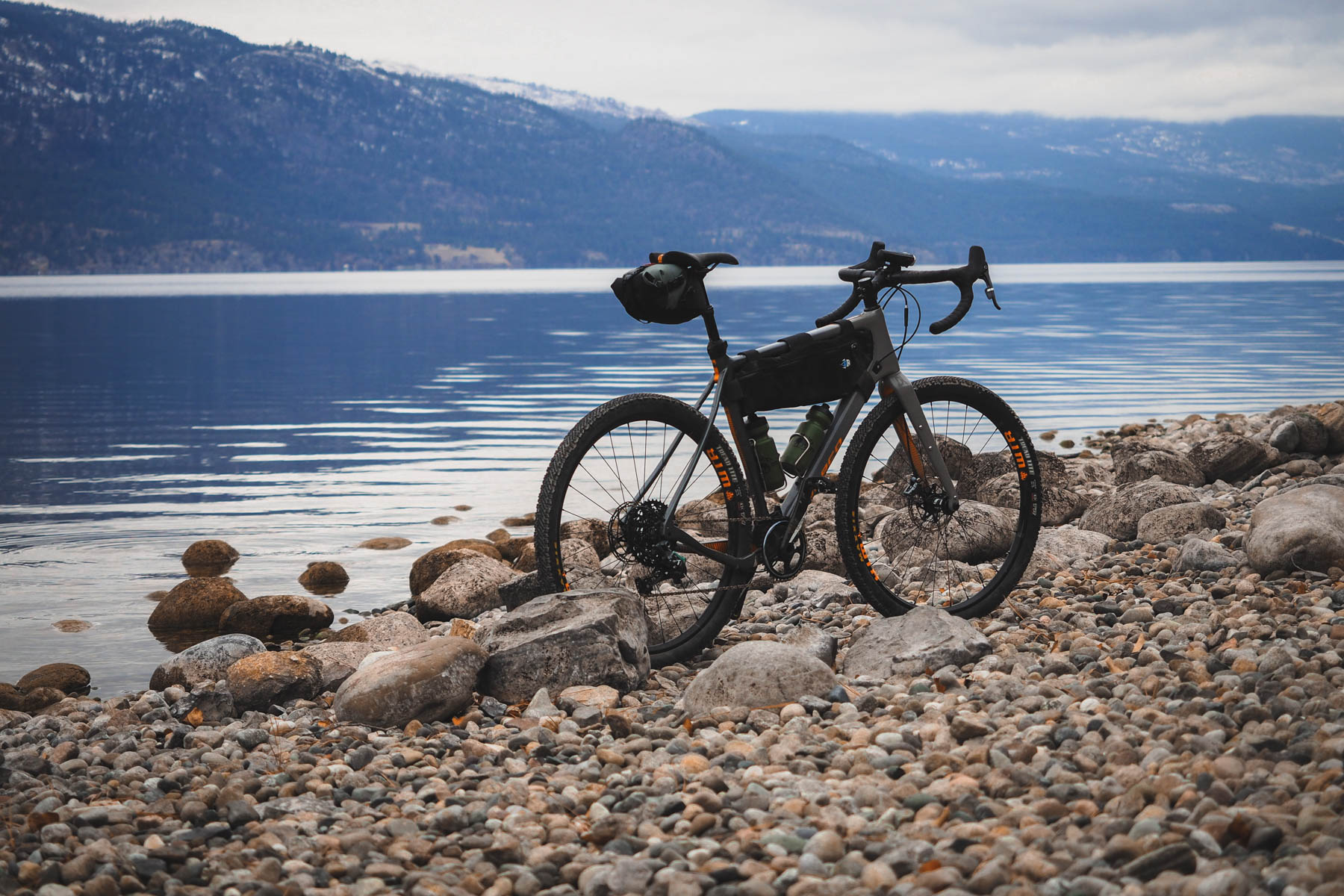
Wrap Up
This is an expensive bike. We are the first to admit that this won’t necessarily jive with all of our readers. However, the Norco Search XR Carbon is also a very capable bikepacking rig that opens up even more terrain opportunities for those who can’t get away from drop-bar gravel bikes. For those who can’t avoid some paved riding to escape urban areas on the way to rougher and more remote trails, the Search XR will perform relentlessly all day long. The multiple wheel size options, various rack and bottle mounts, and clearance for decent sized 650B tires makes this bike a great potential option for endurance bikepacking races that would benefit from a lighter overall package.
Riders on the hunt for a super comfortable platform, day after day, will also appreciate and benefit from the carbon frame and fork, which do a great job soaking up whatever terrain irregularities are thrown your way. If carbon isn’t your thing, then the Search XR Steel lineup offers many of the same features but are based around a Reynolds 725 chromoly frameset, an option we are also quite interested in.
Lastly, do not be fooled by the Search XR’s shiny paintjob or high price tag. This bike likes it rough.

Rider Profile
Based out of Kelowna, British Columbia, Miles enjoys riding flowy singletrack, exploring service roads, and often finds himself further from home than he planned. The Norco Search XR was loaned to Miles for this review.
- Height: 6’1” (181 CM)
- Weight: 185 lbs (84 KG)
- Inseam: 33” (83.8 CM)
- Current Location: Kelowna, BC
- Favorite Beer: Something Dark
- Favorite Route: The Fool’s Loop
Please keep the conversation civil, constructive, and inclusive, or your comment will be removed.






